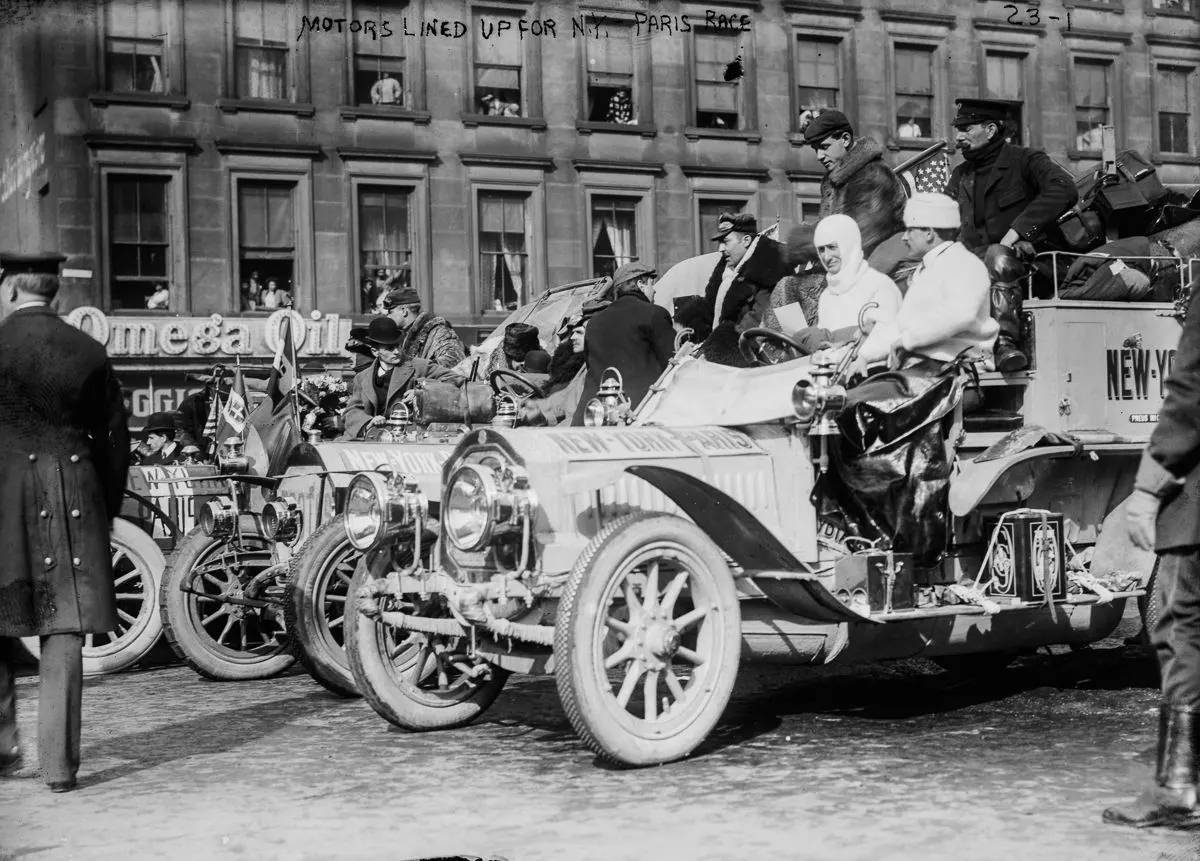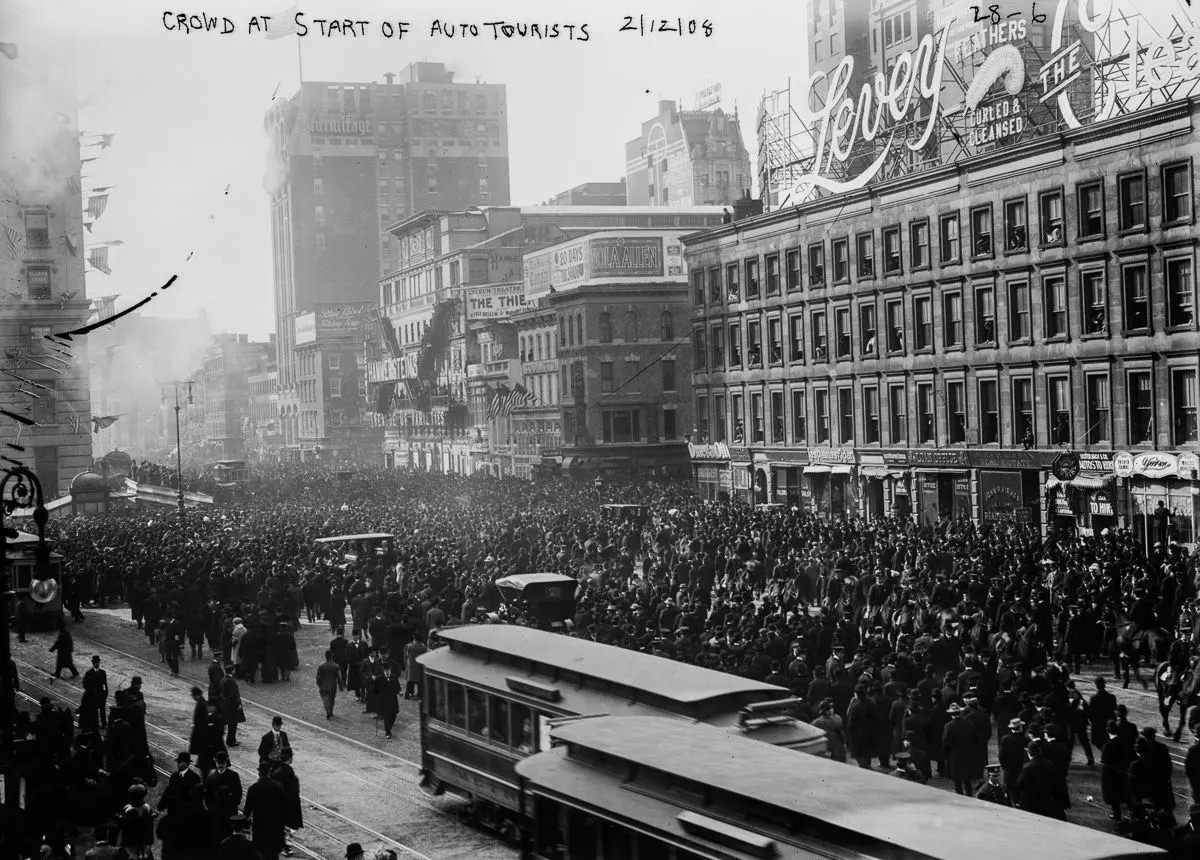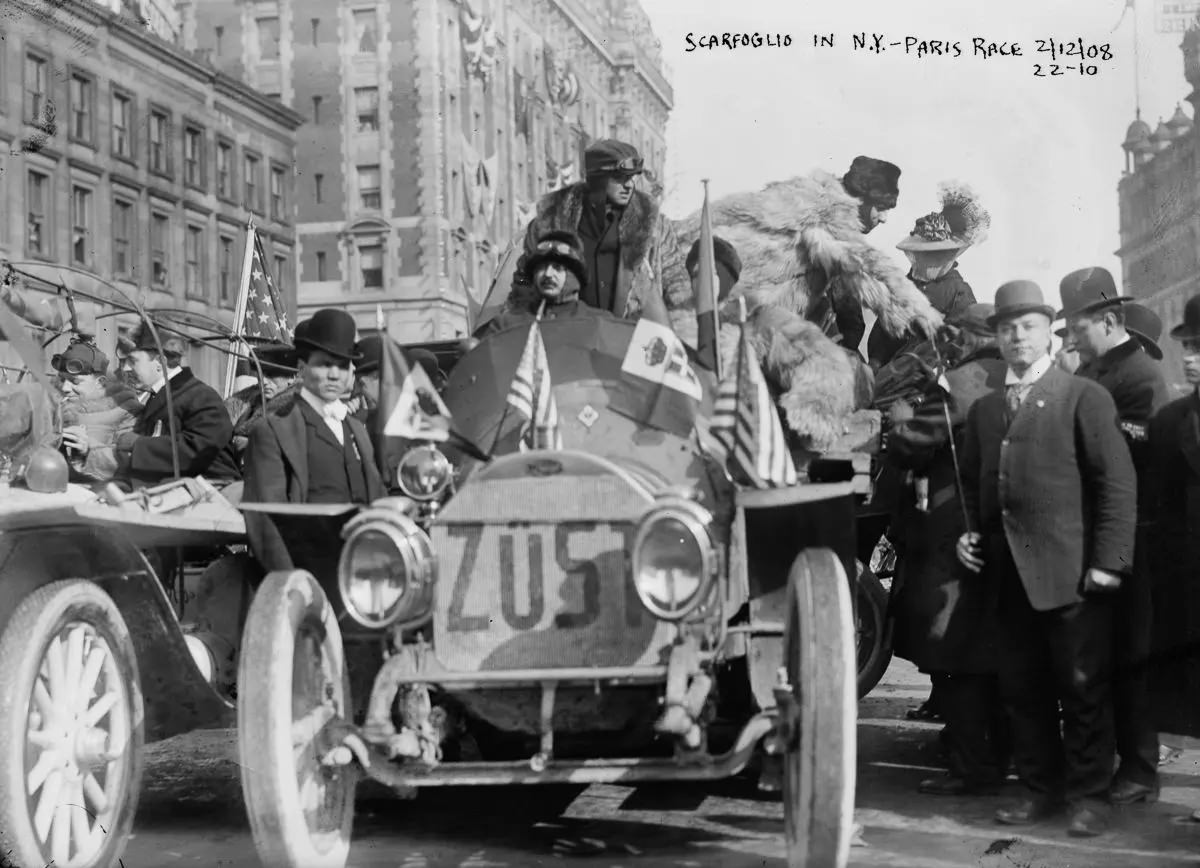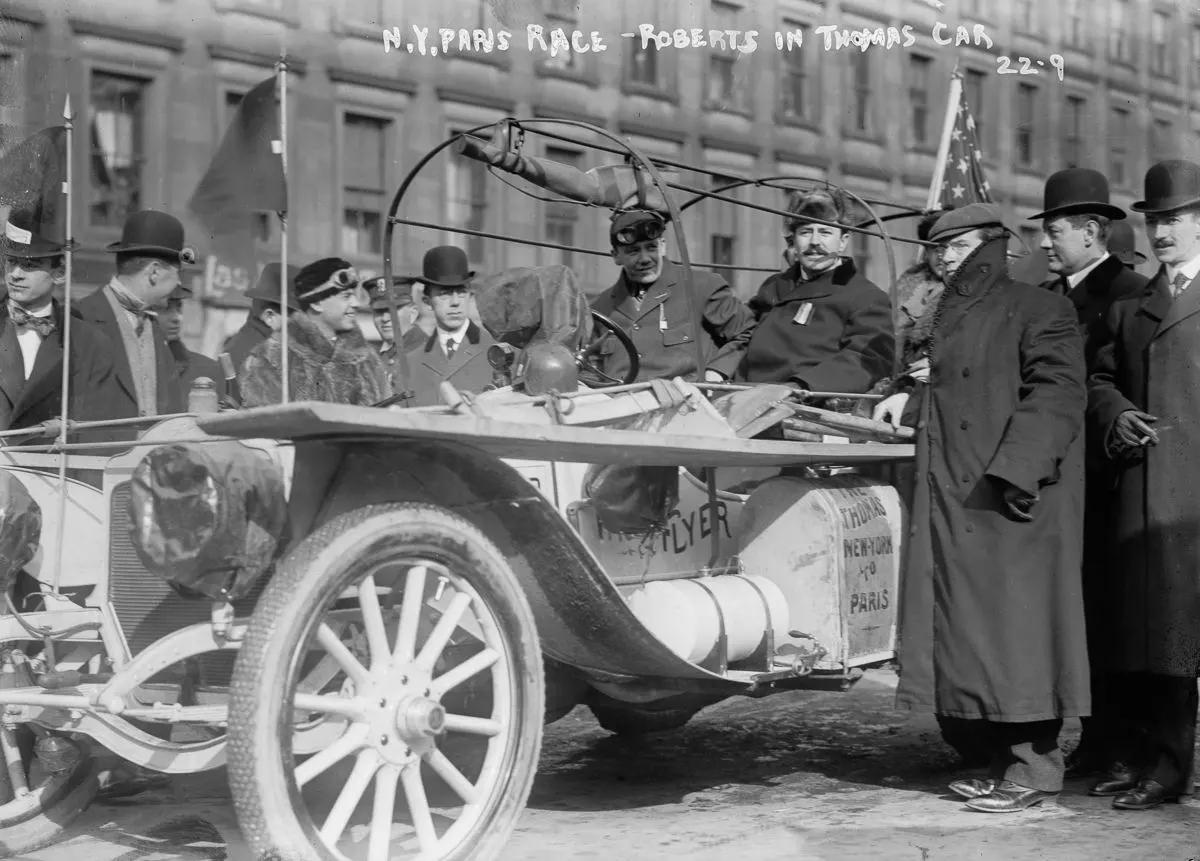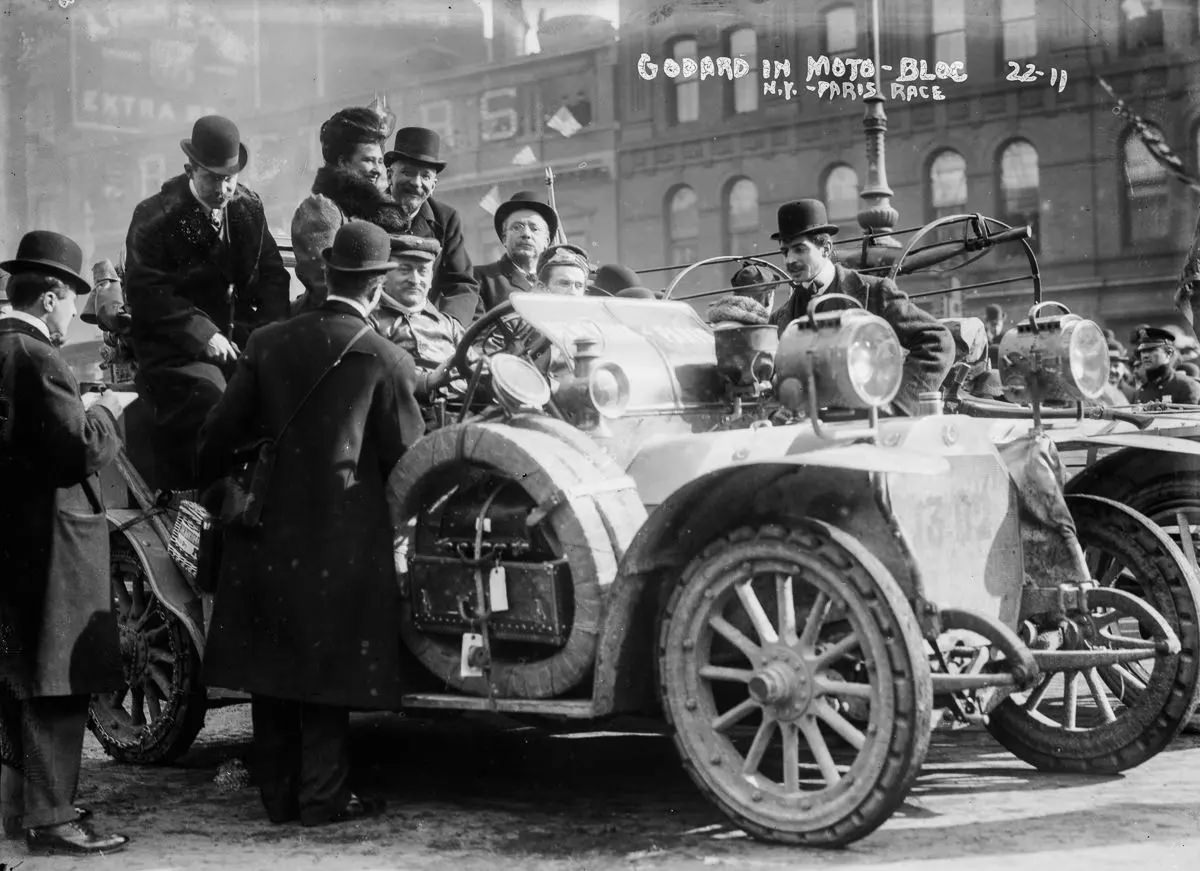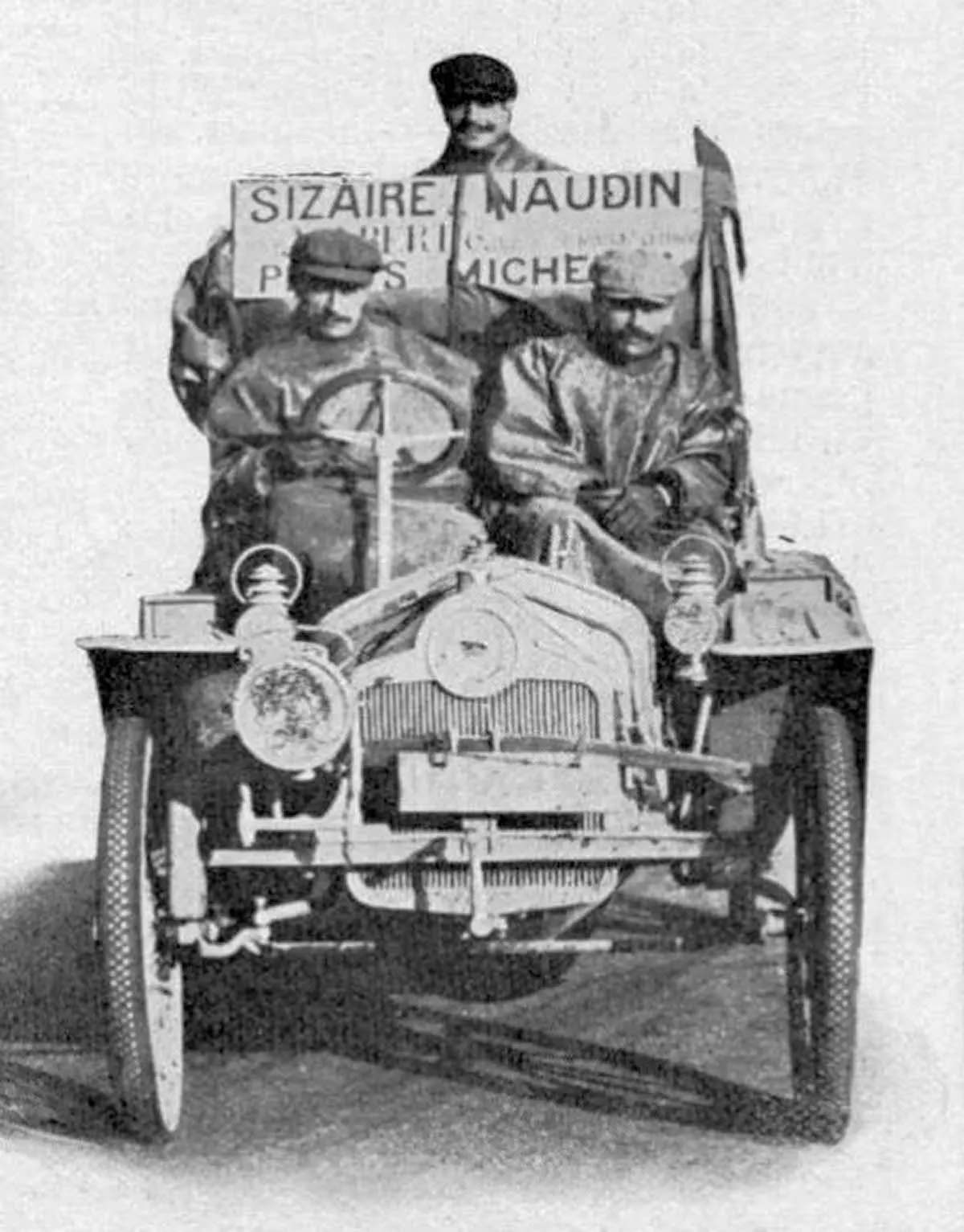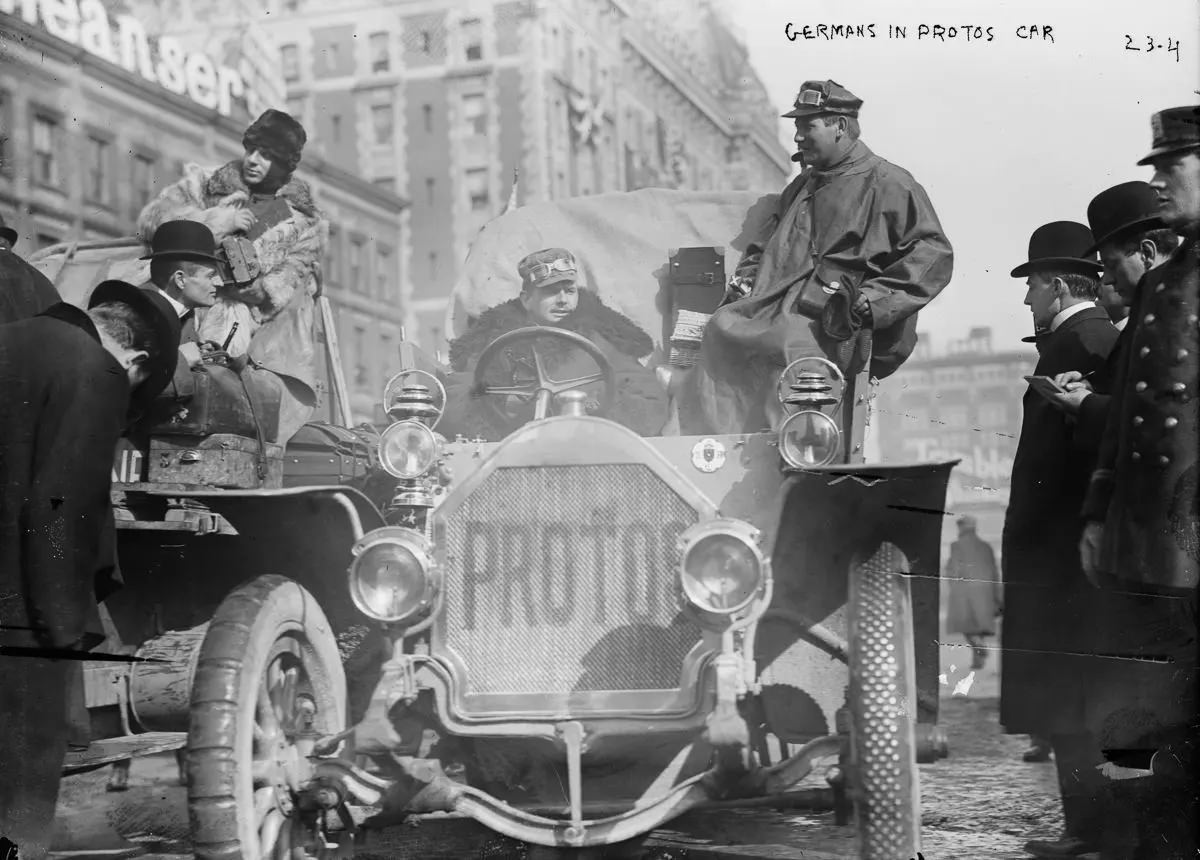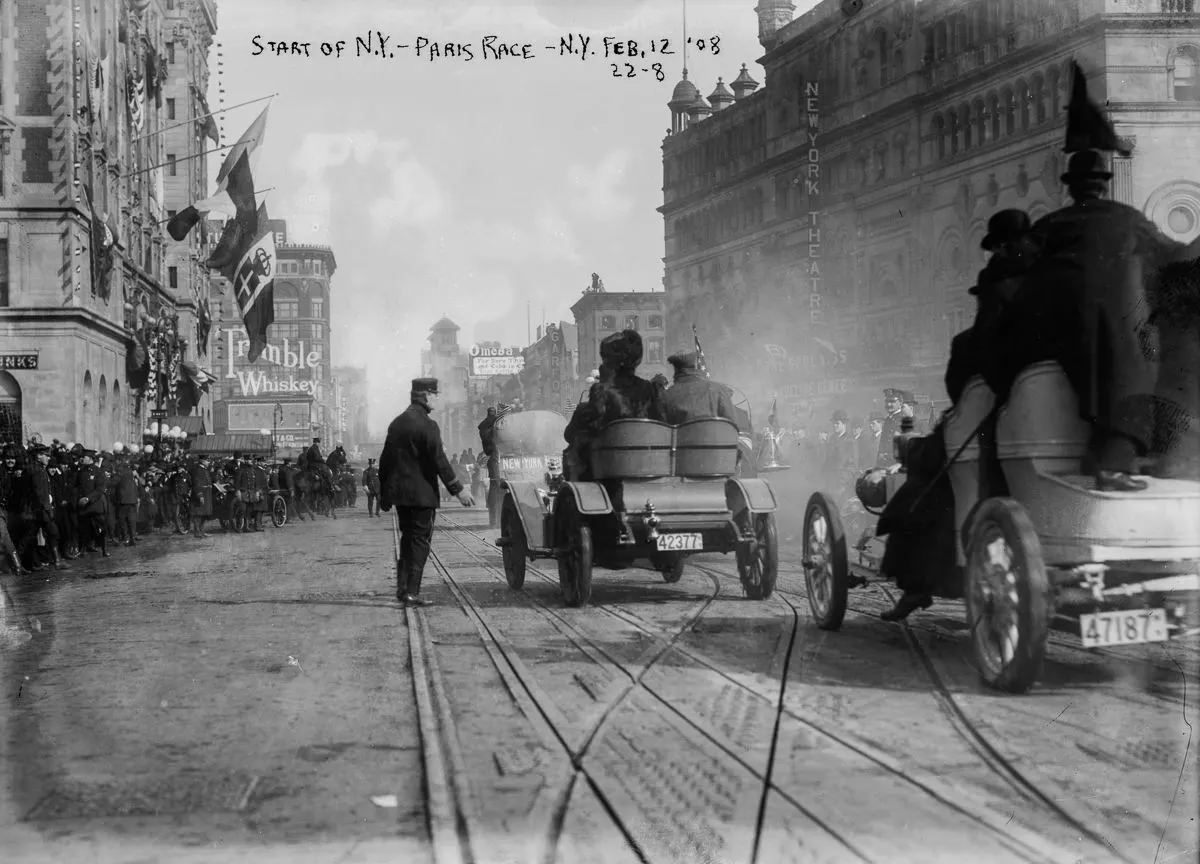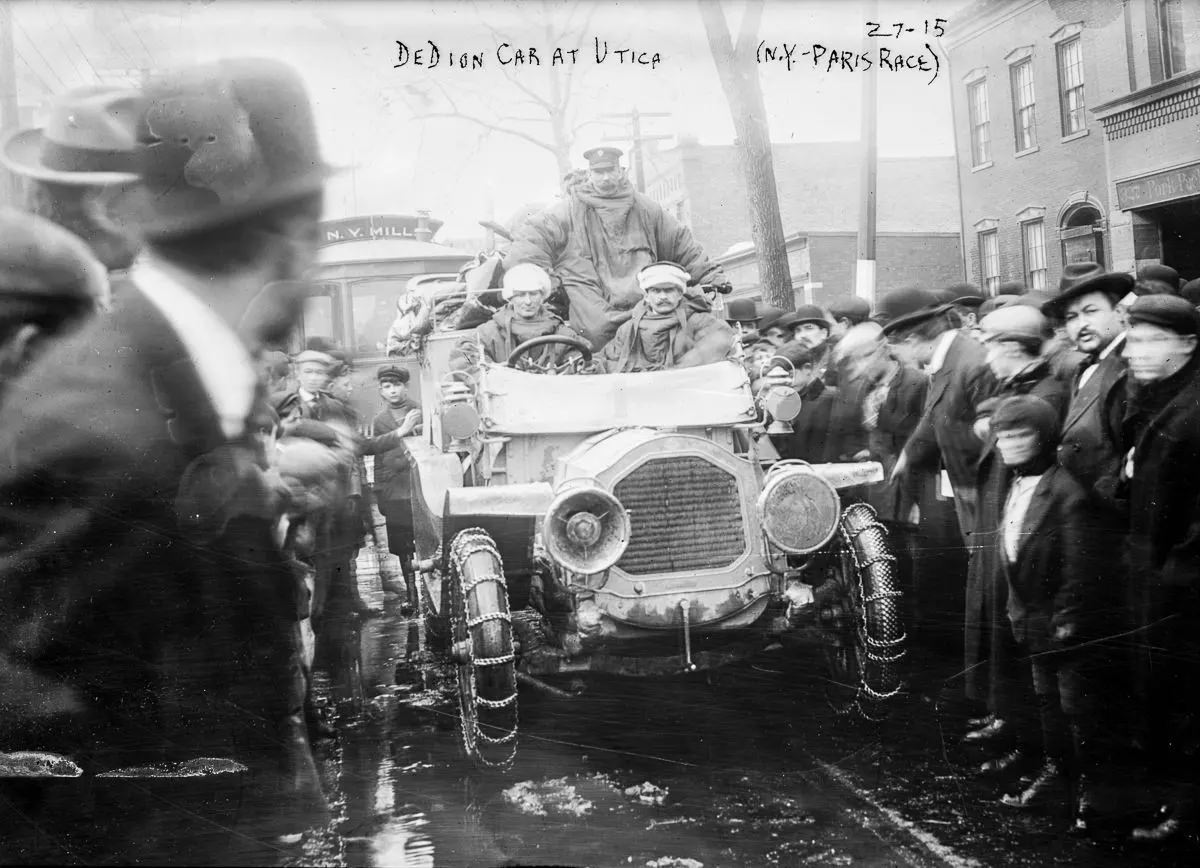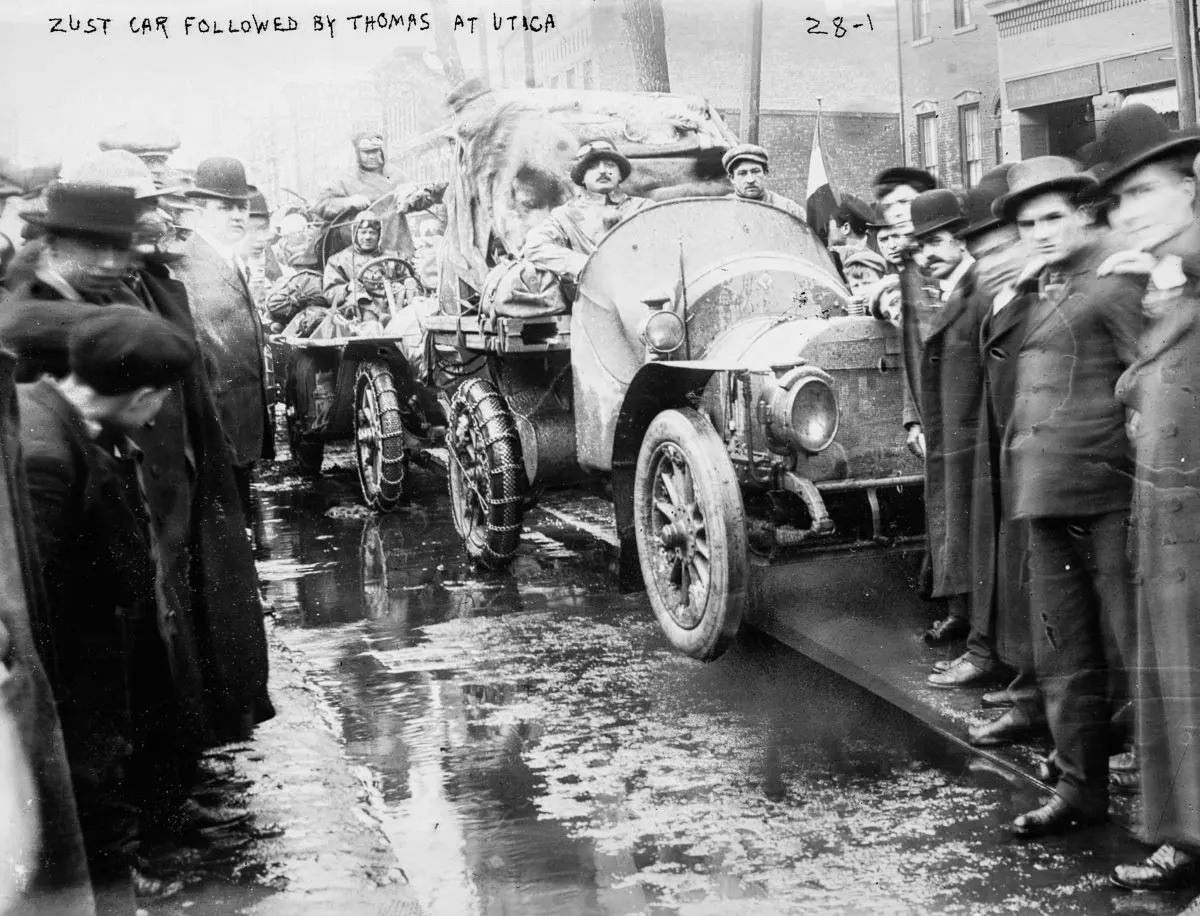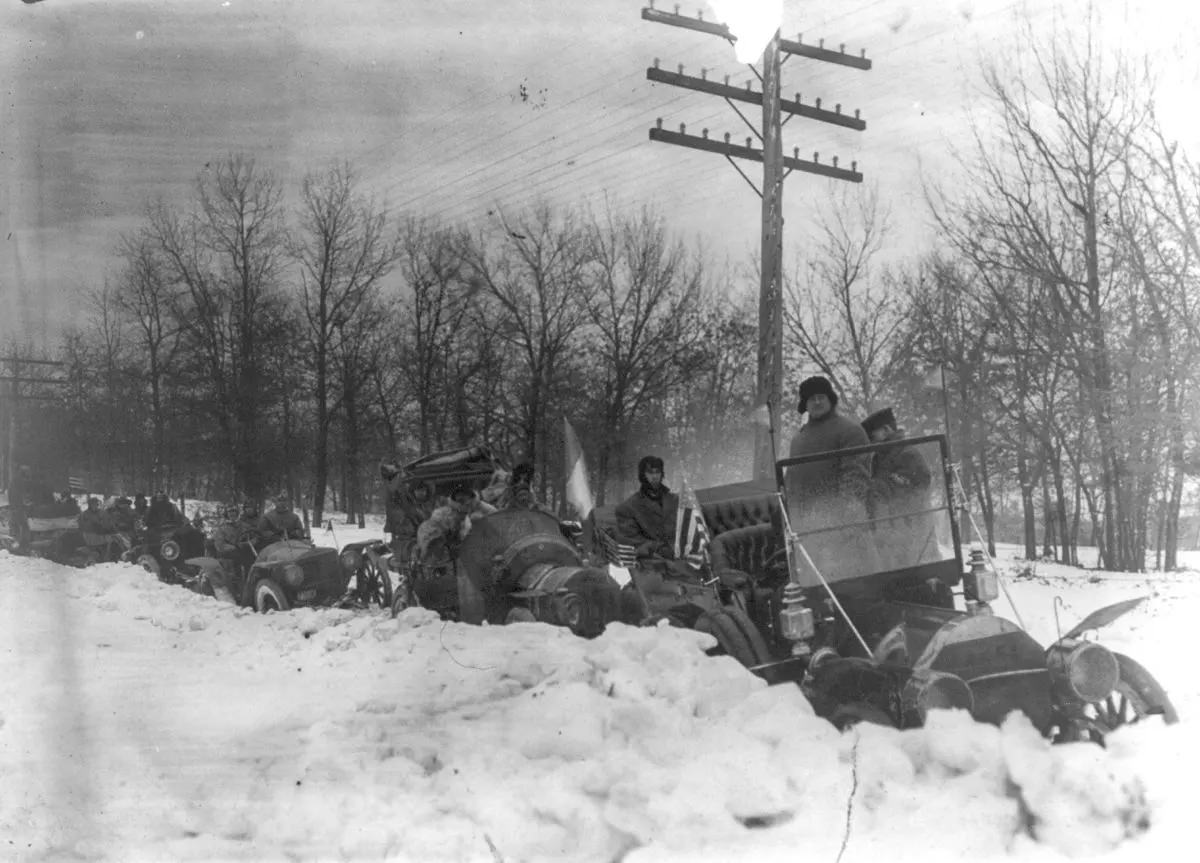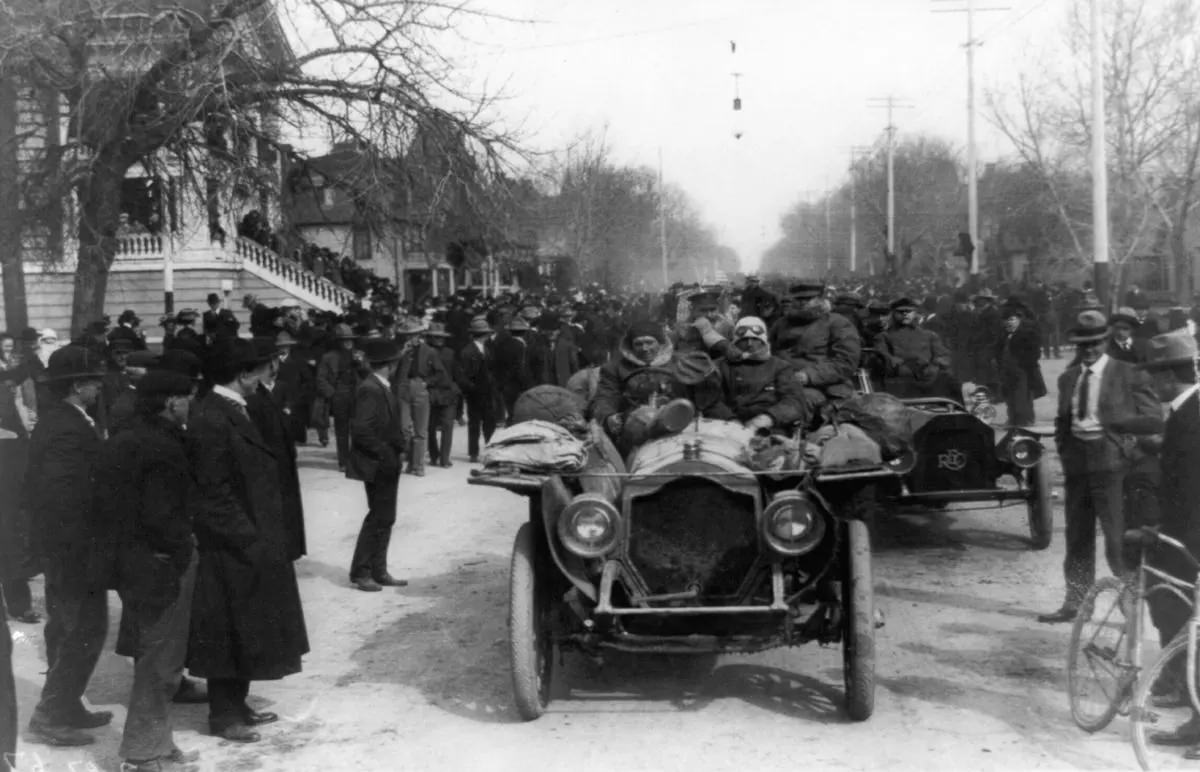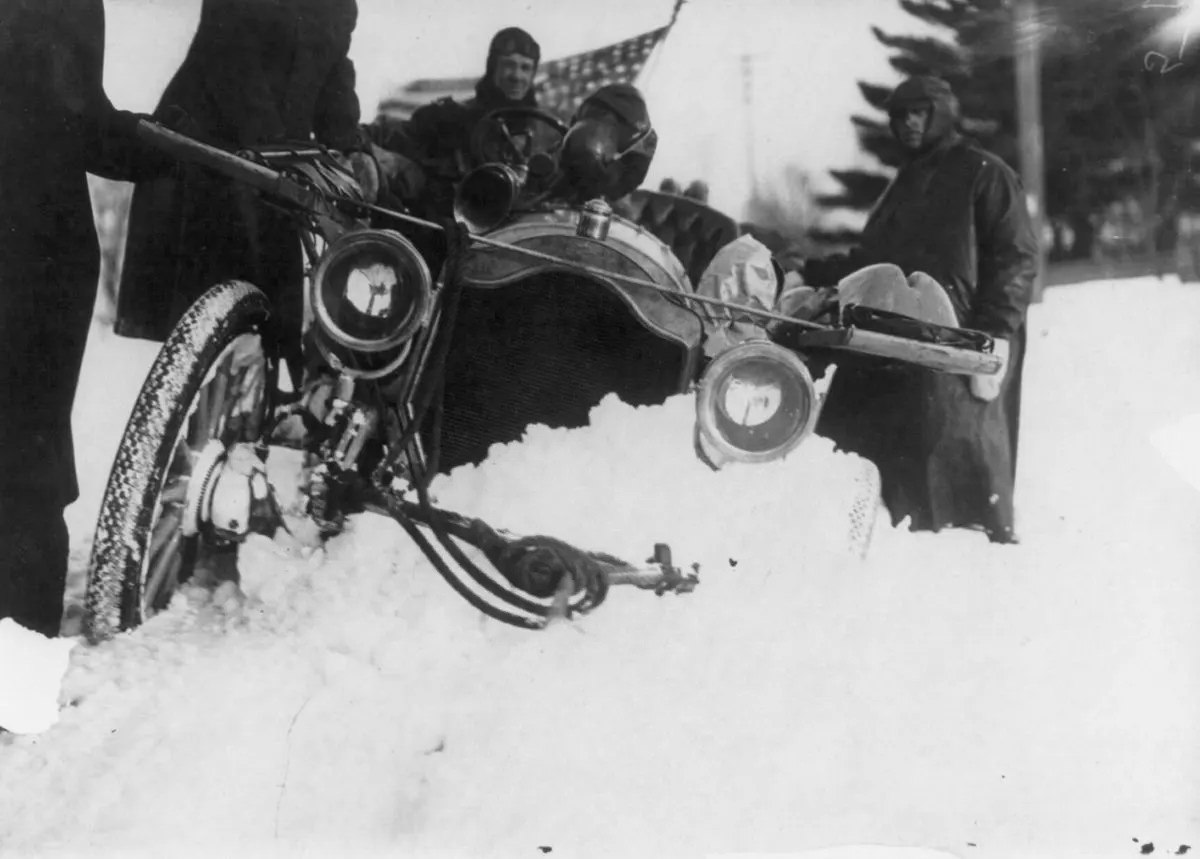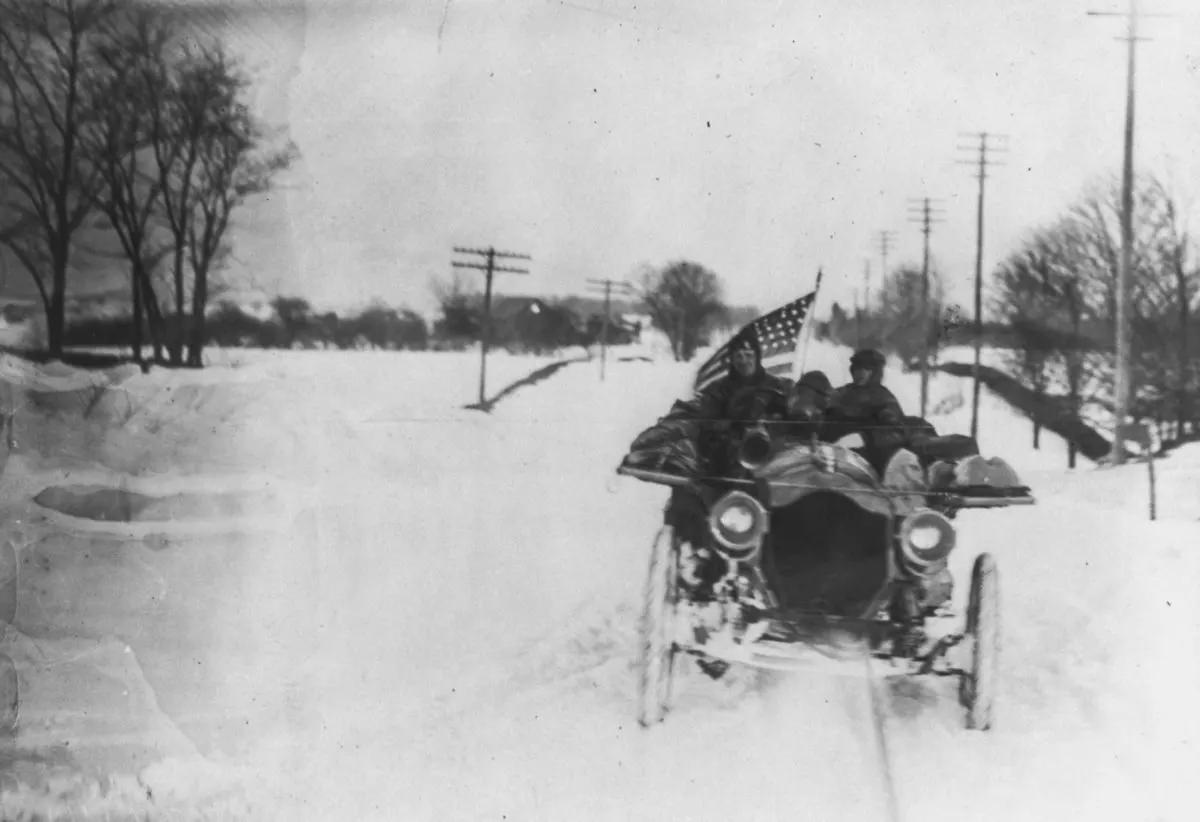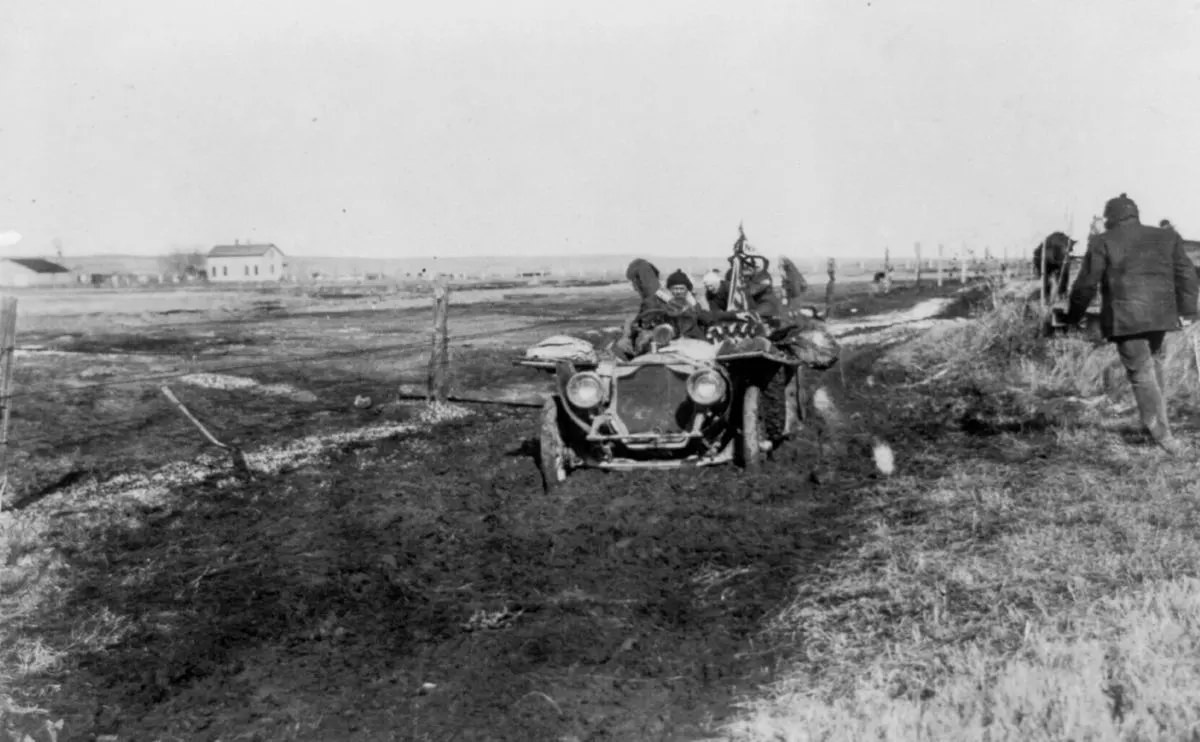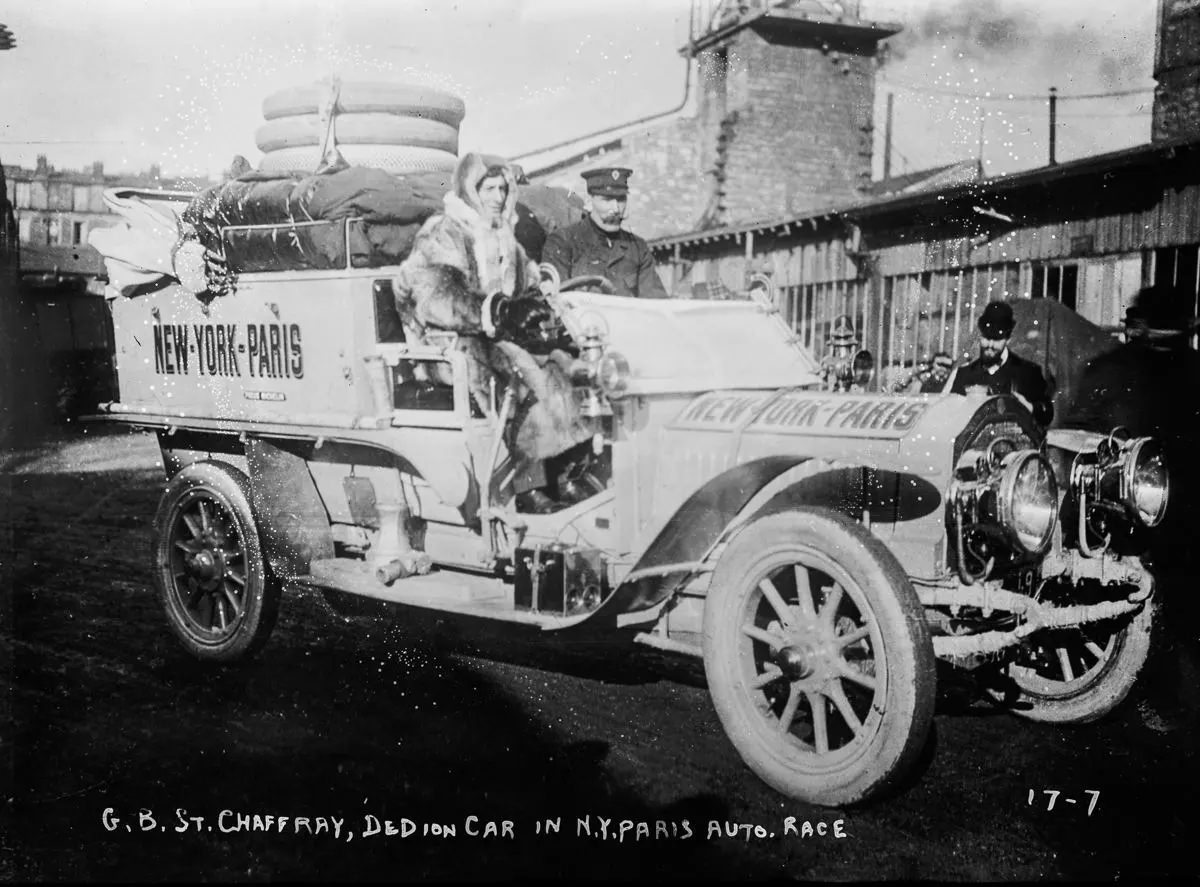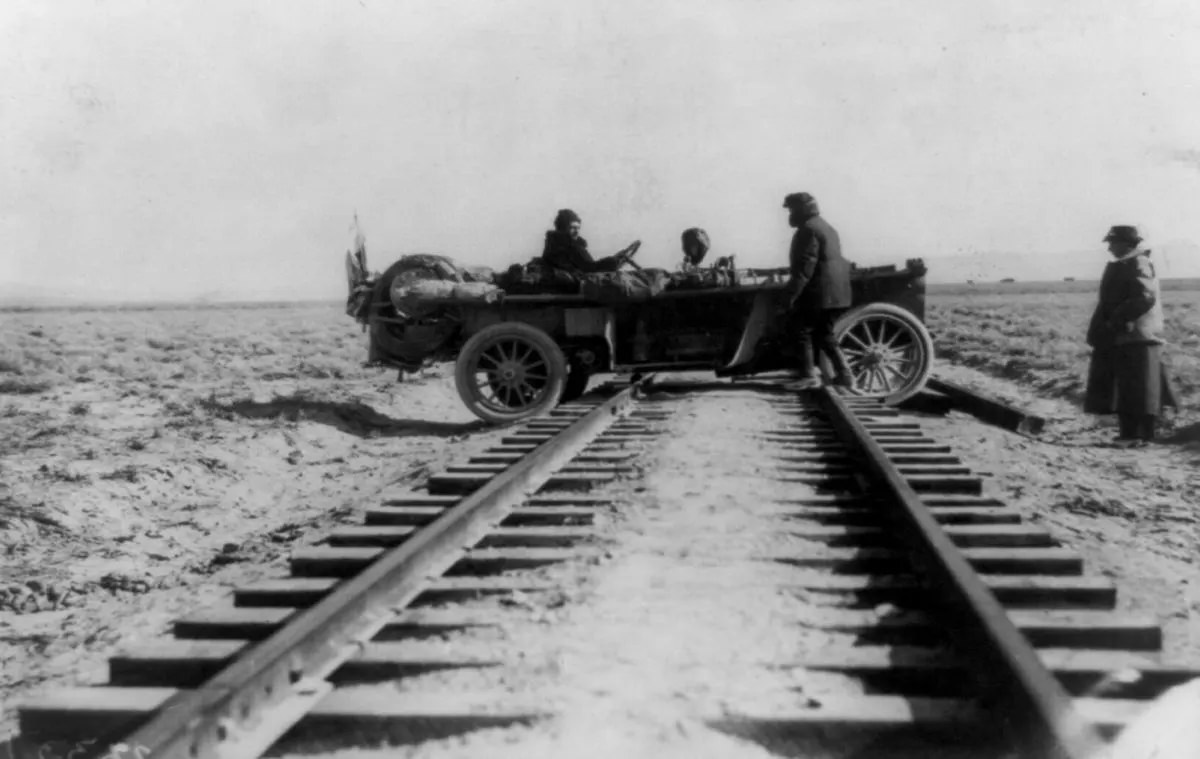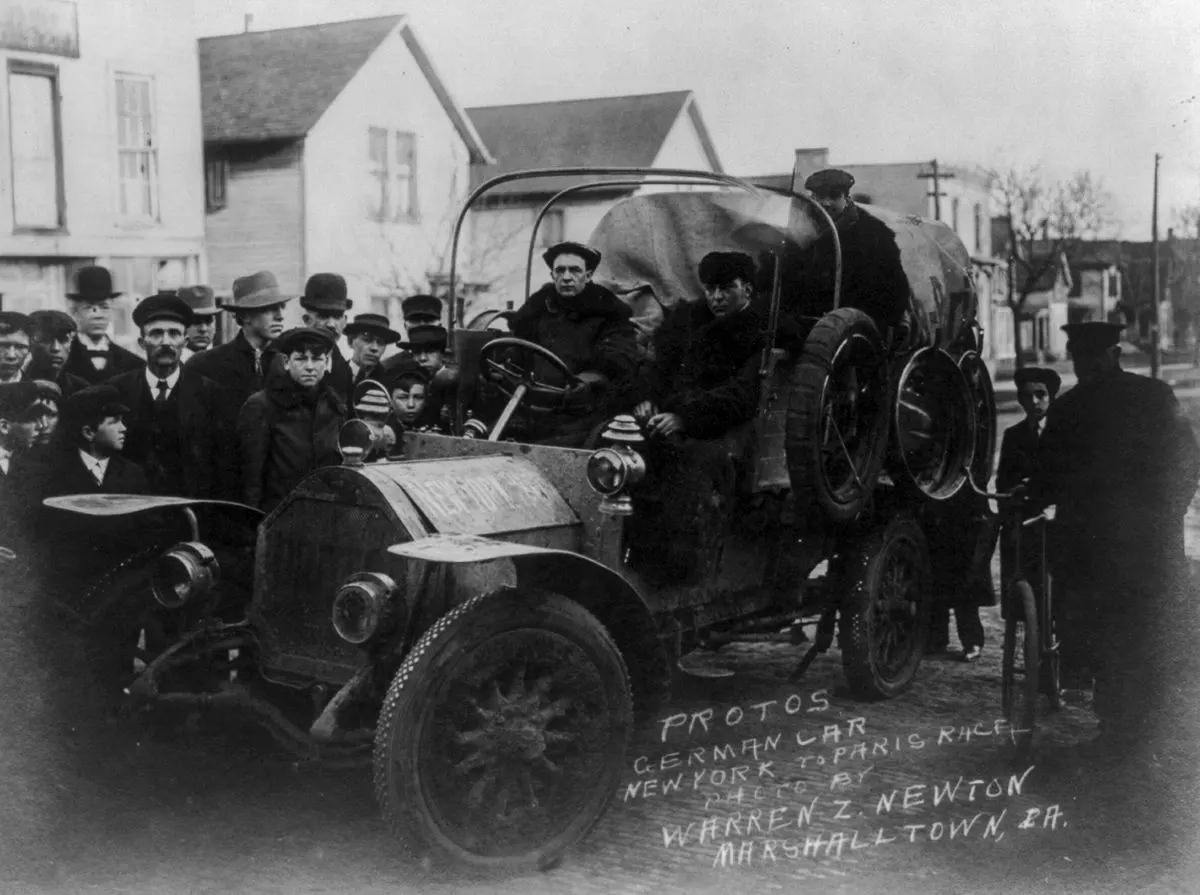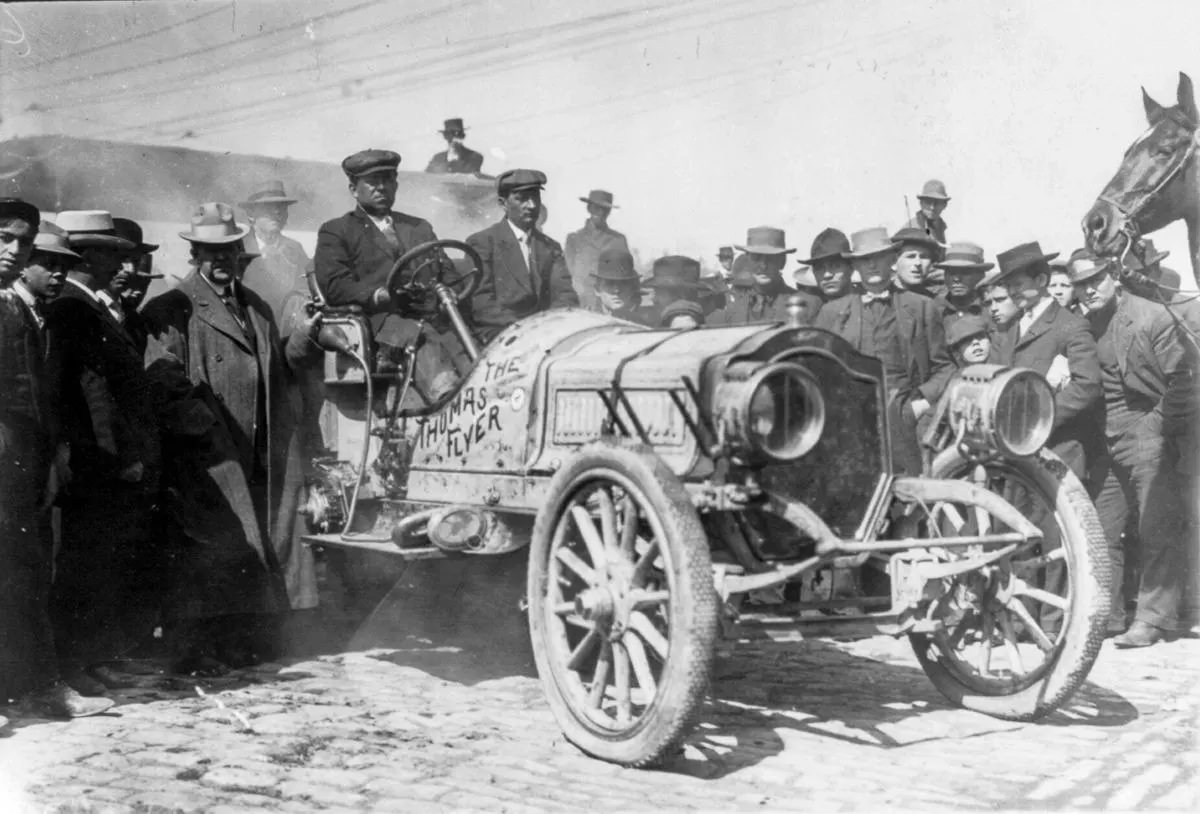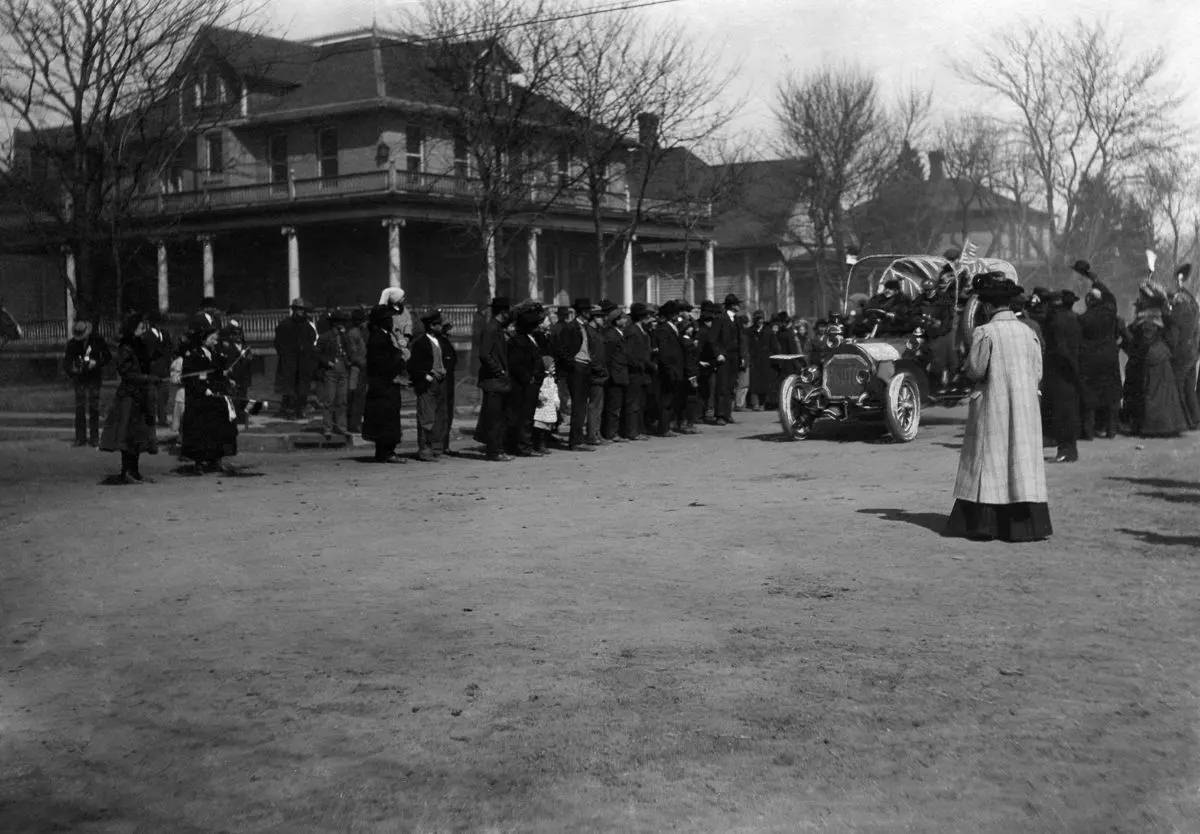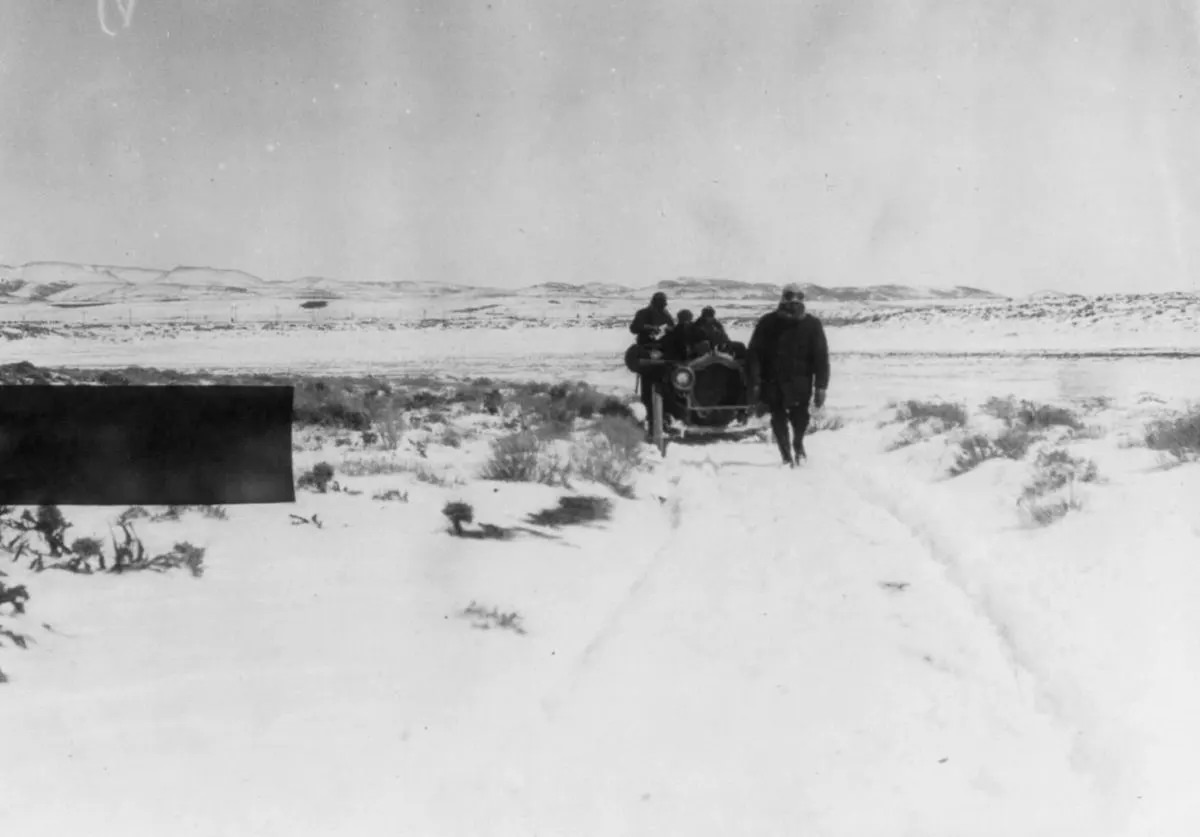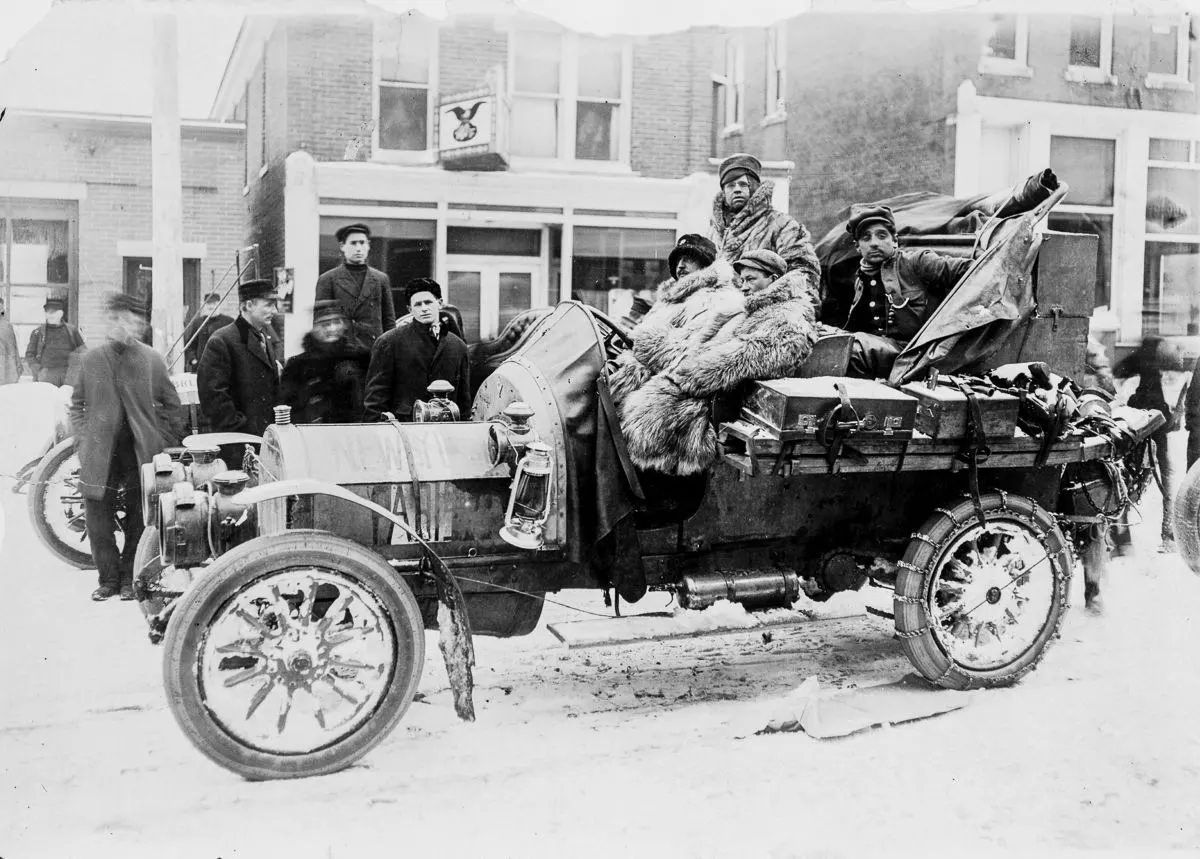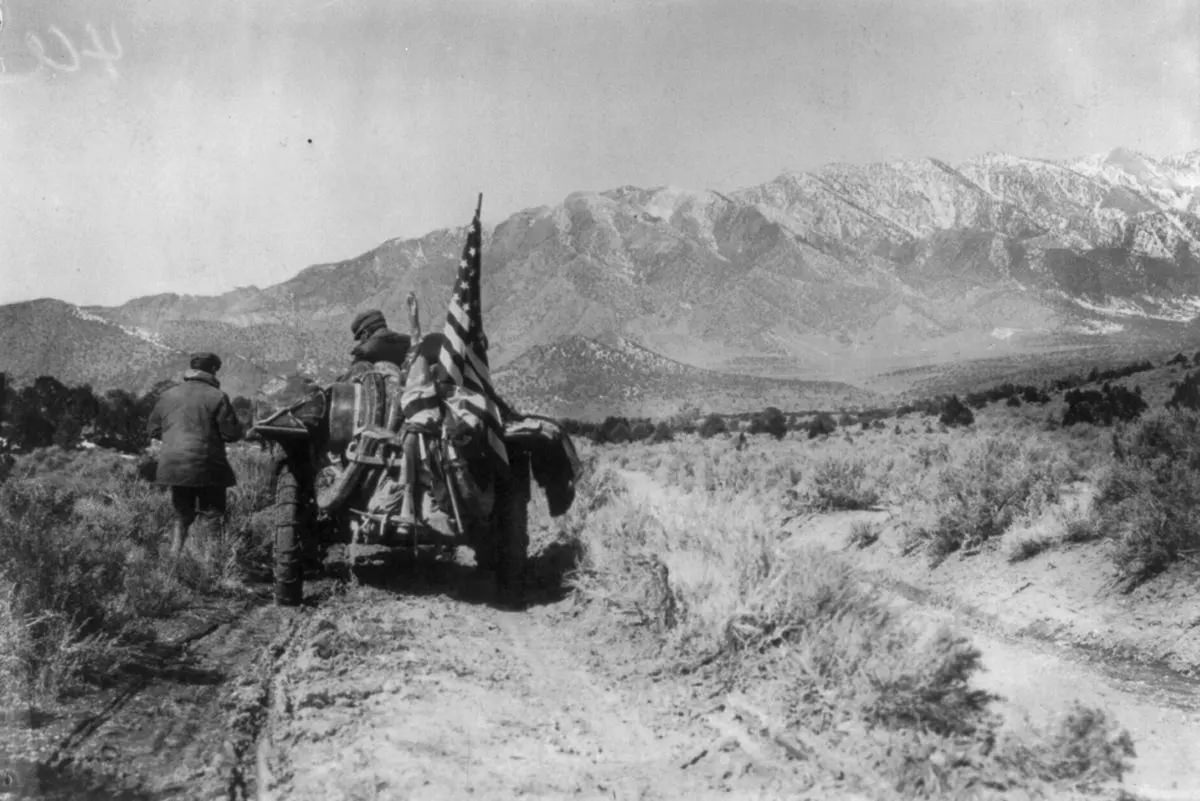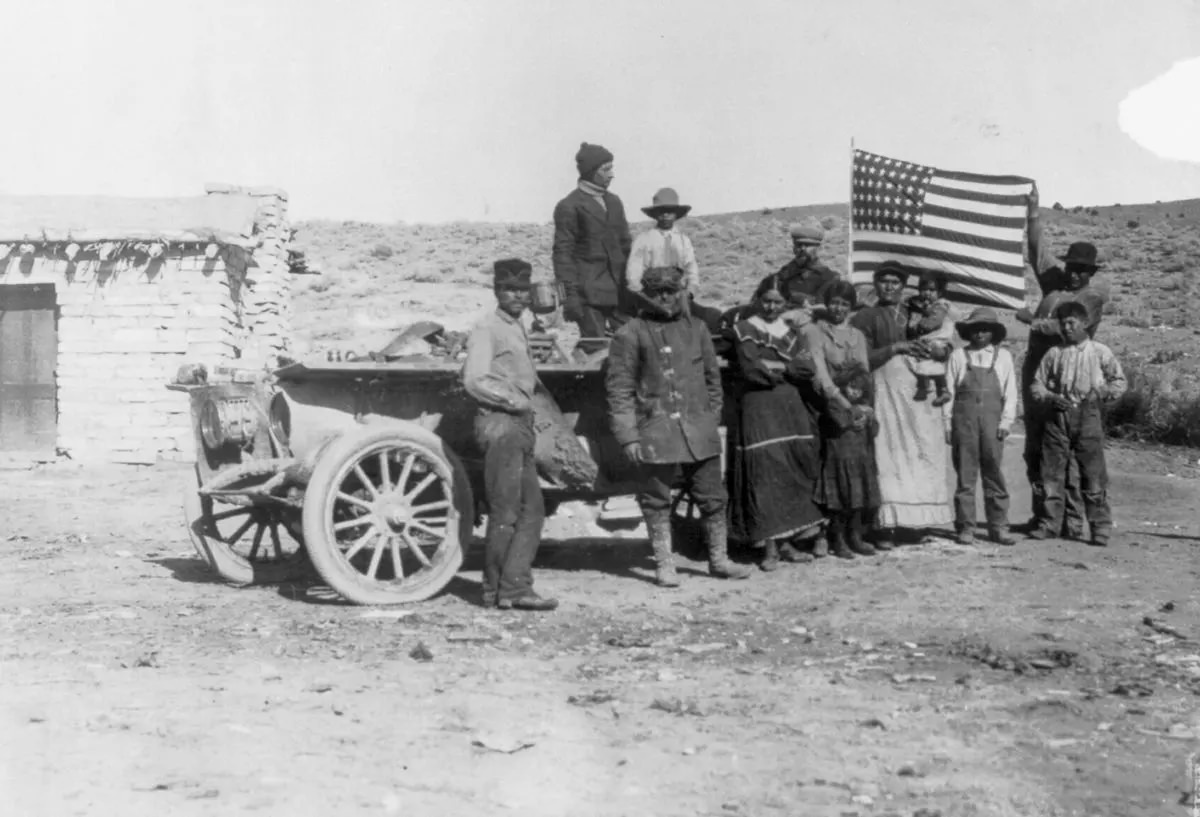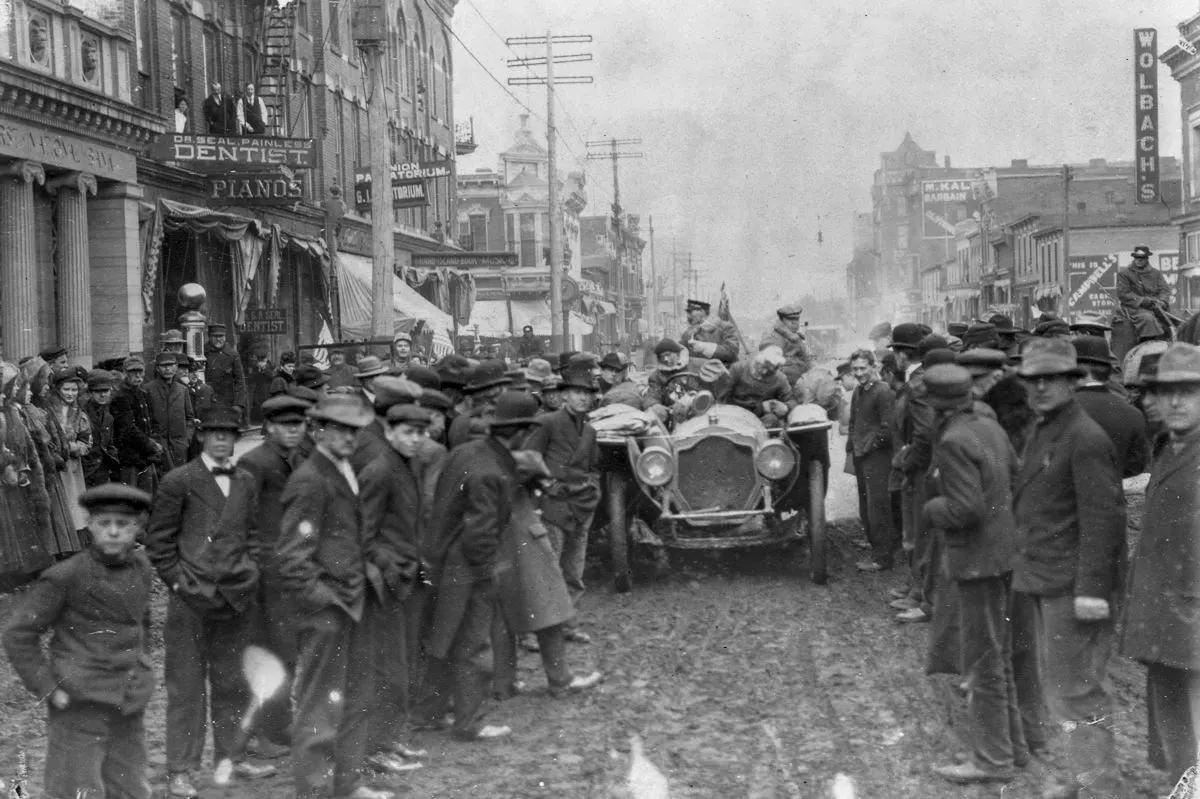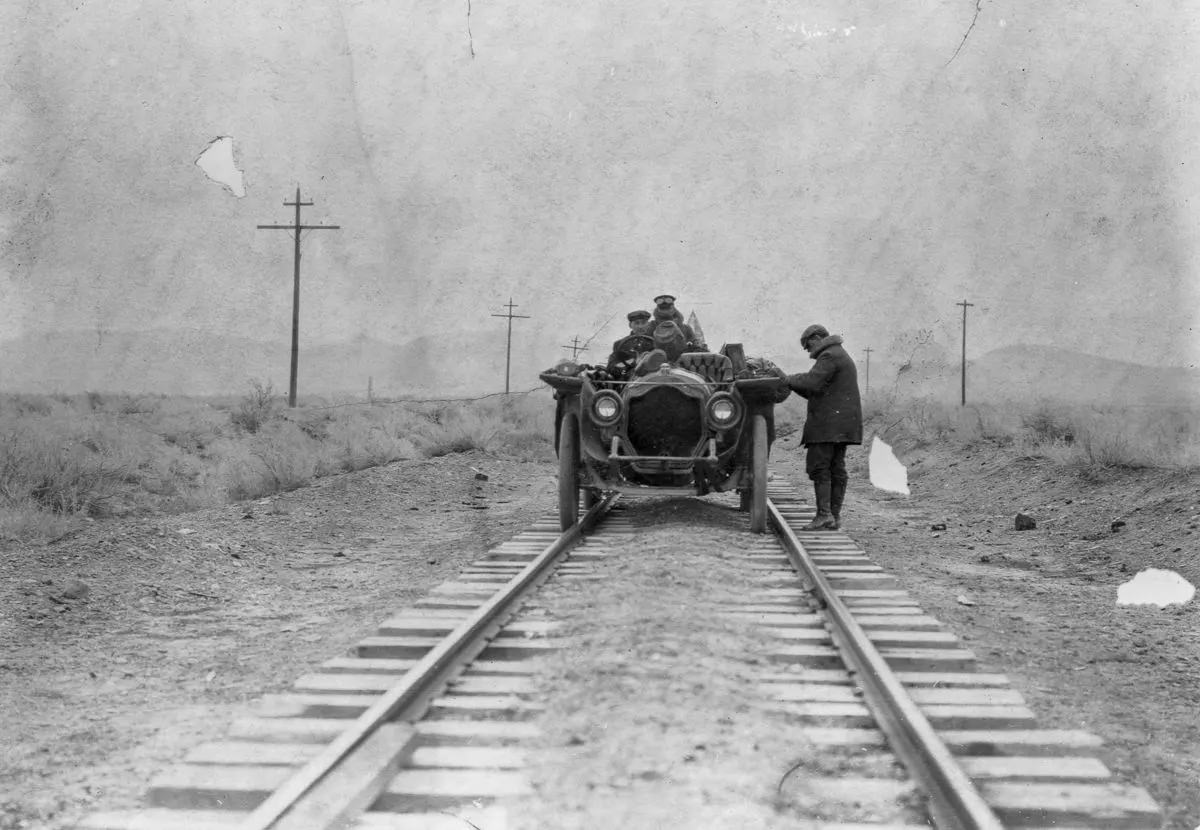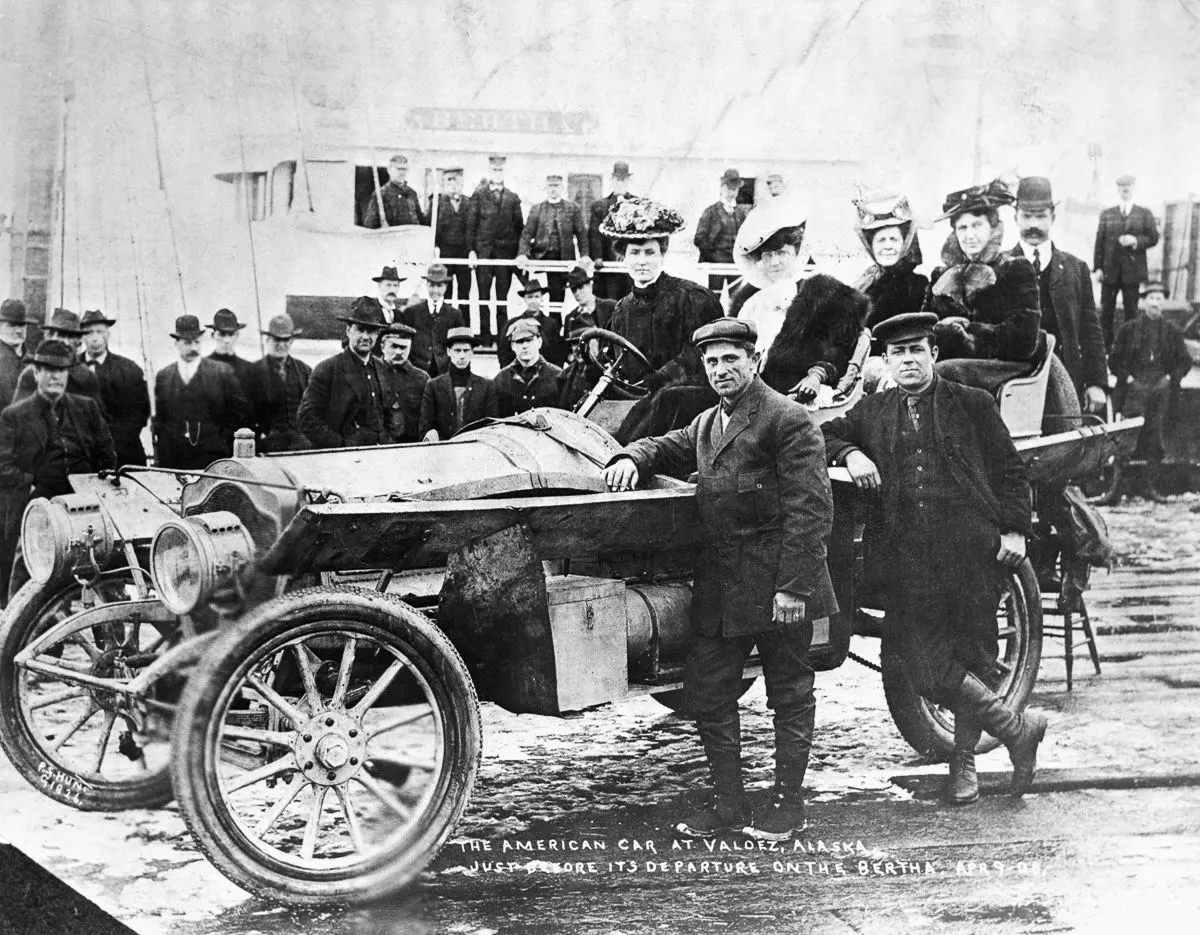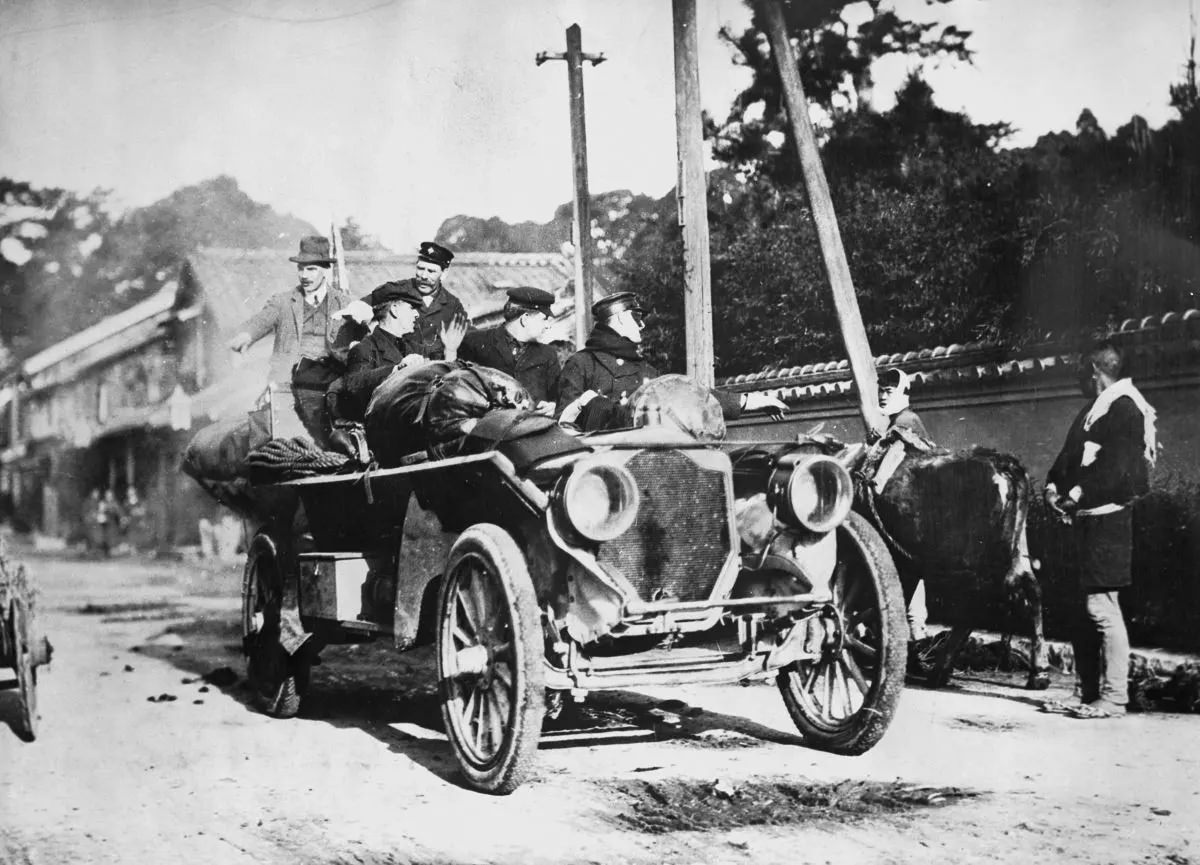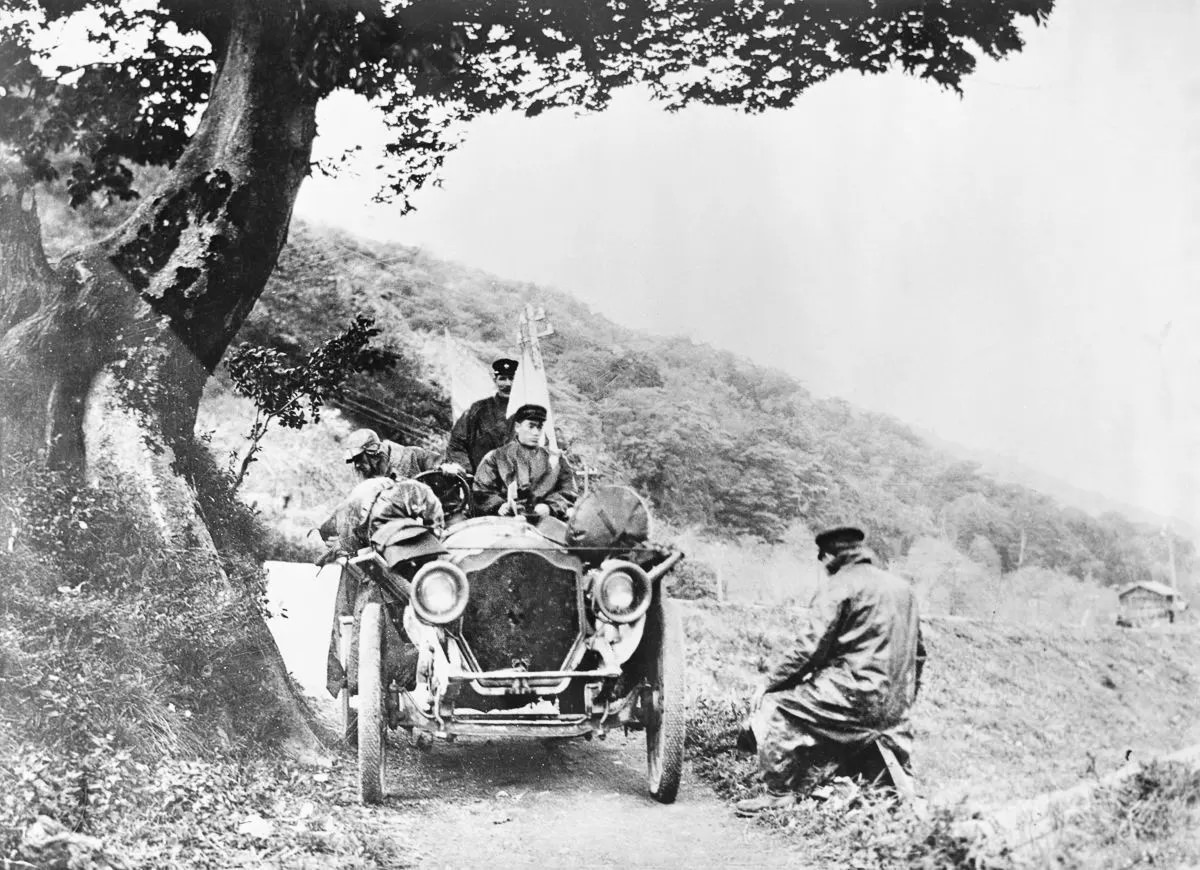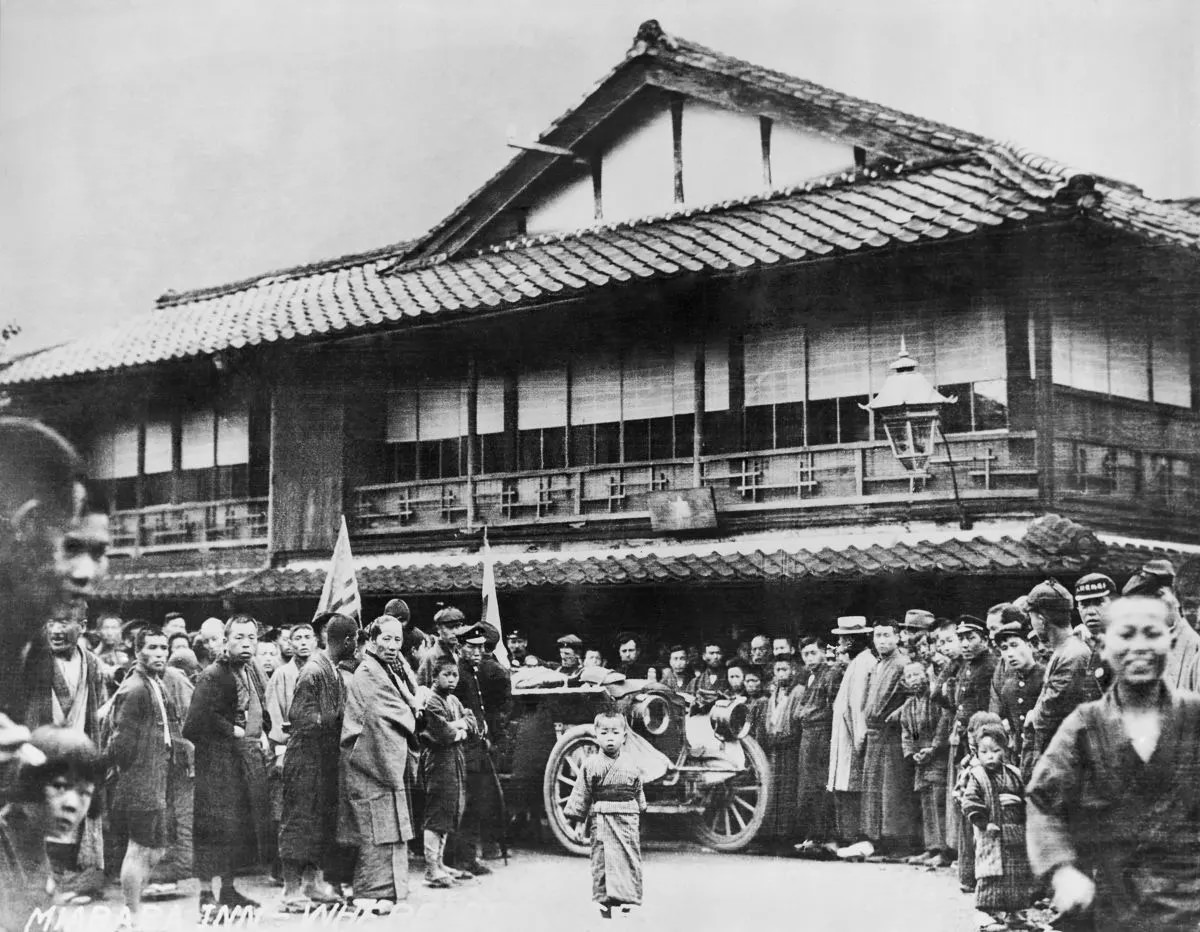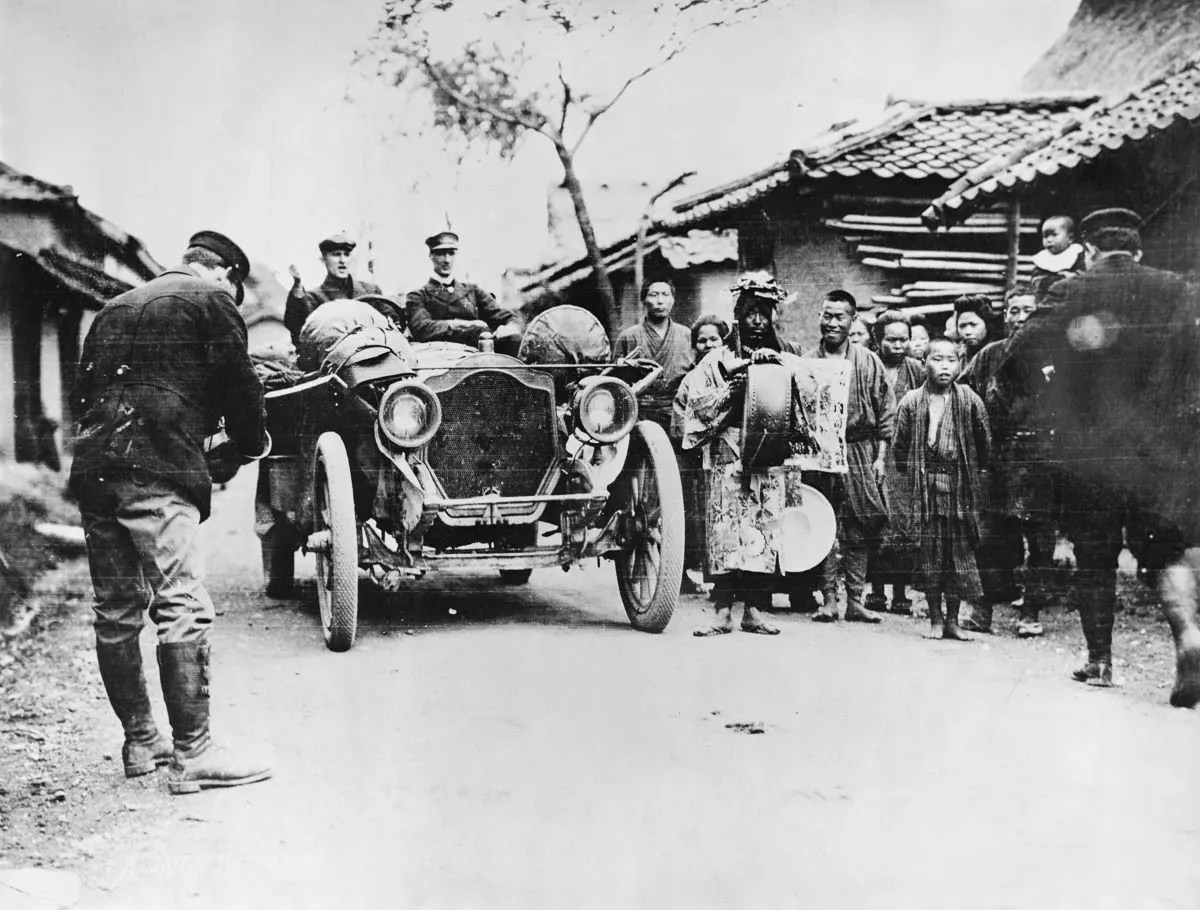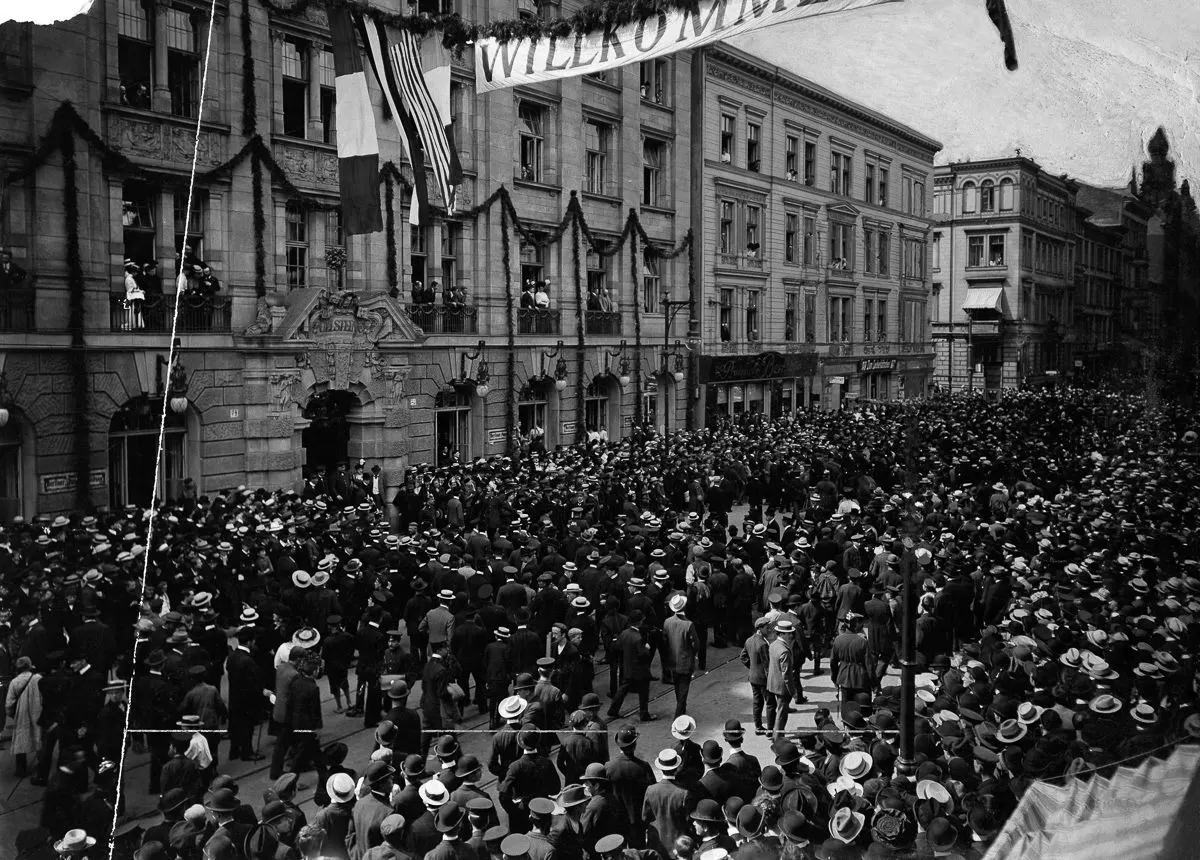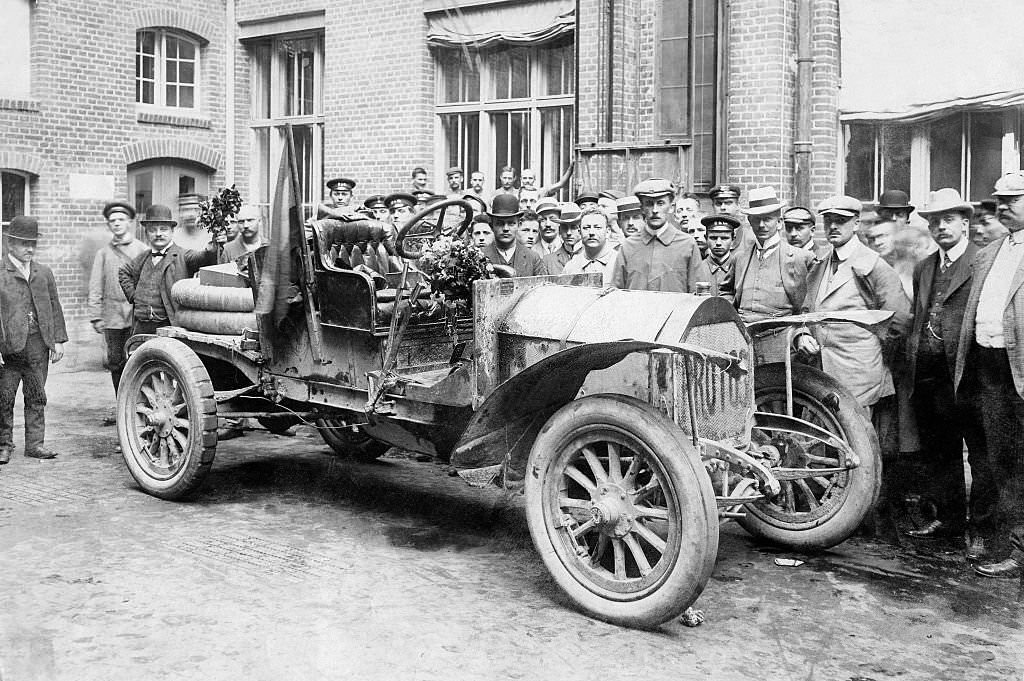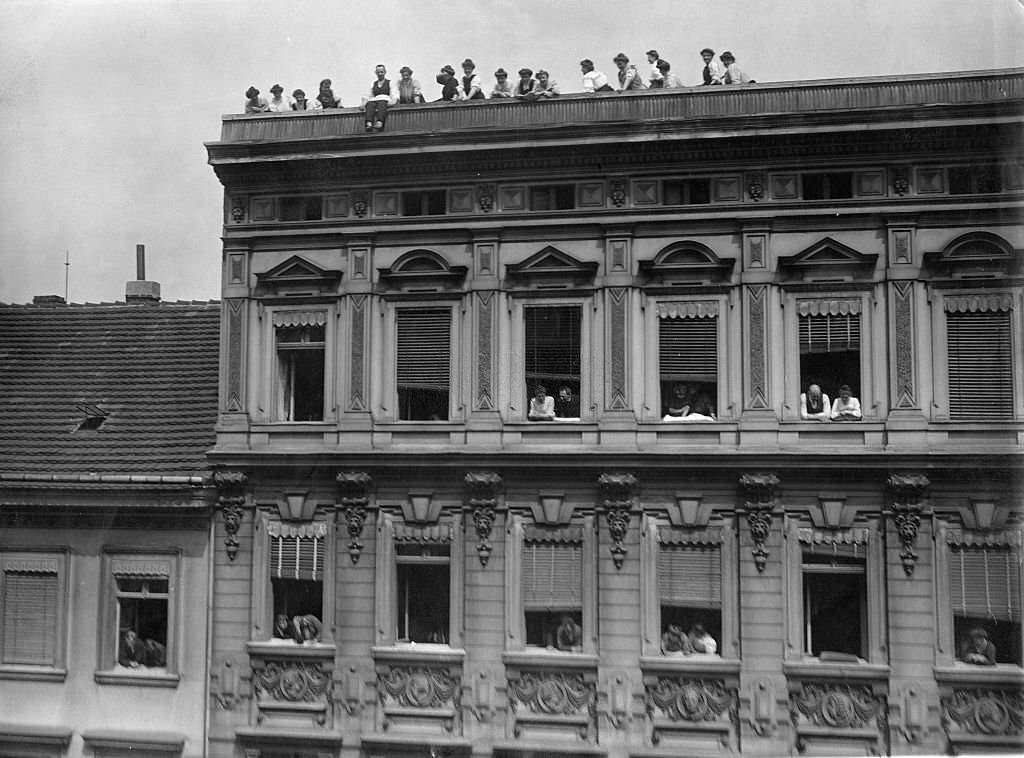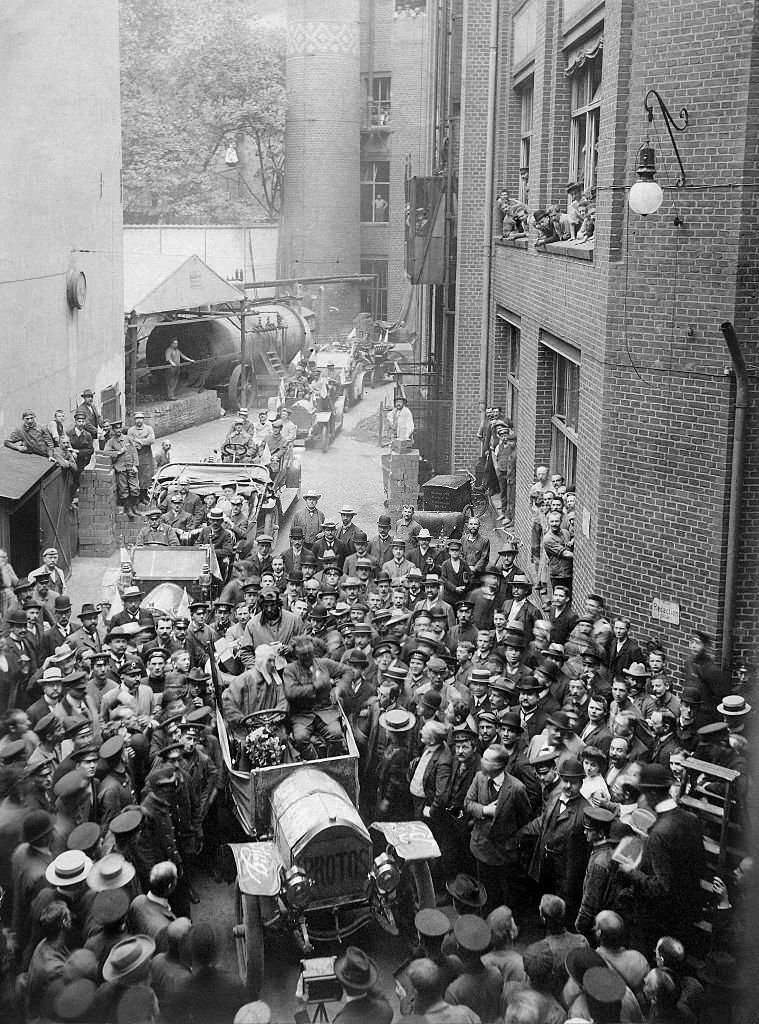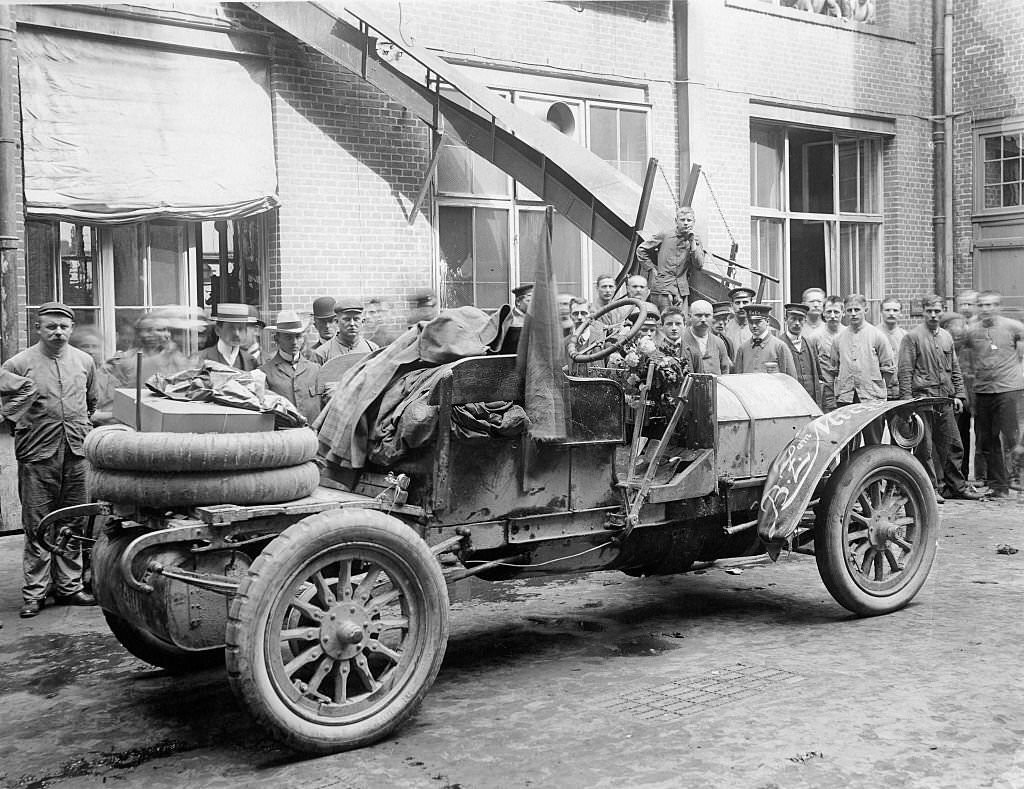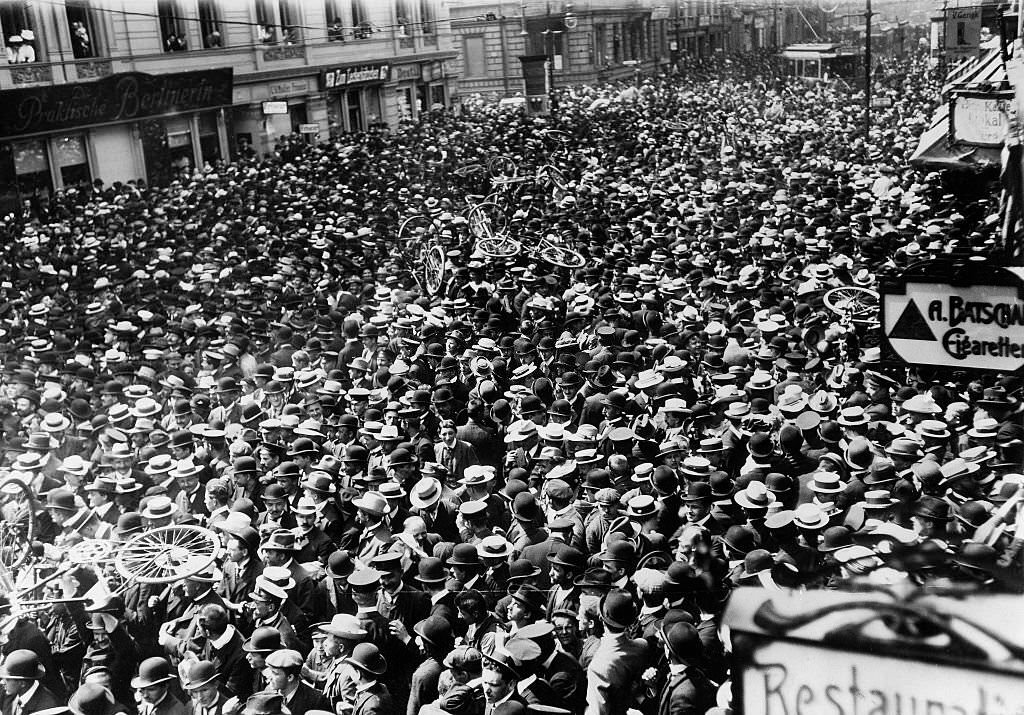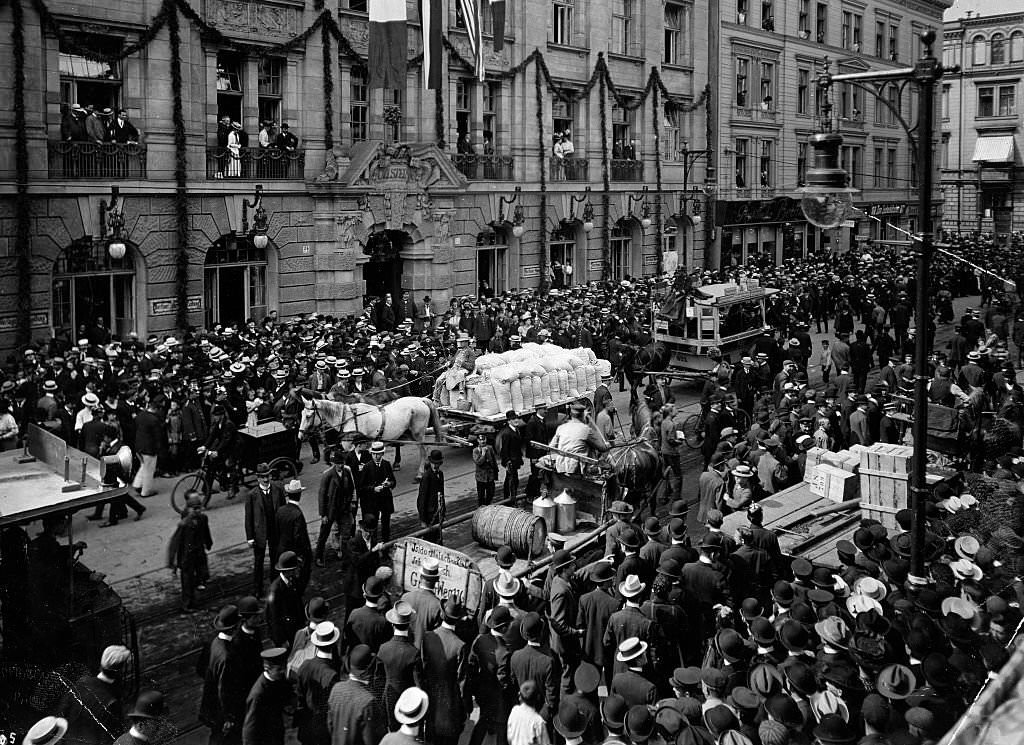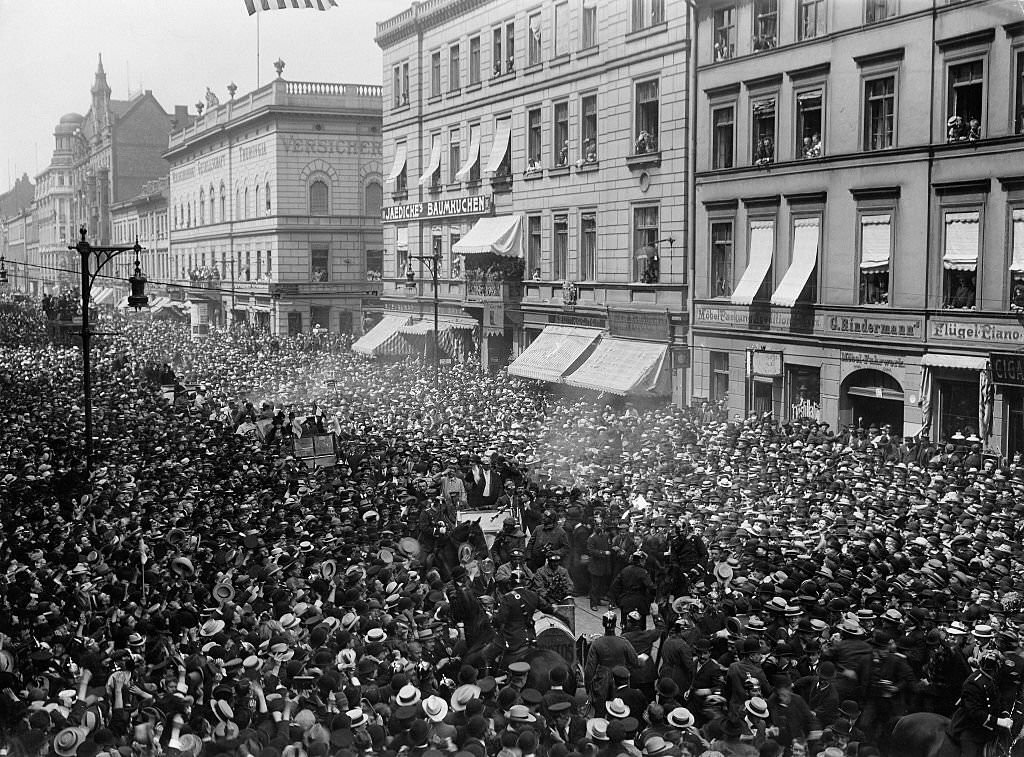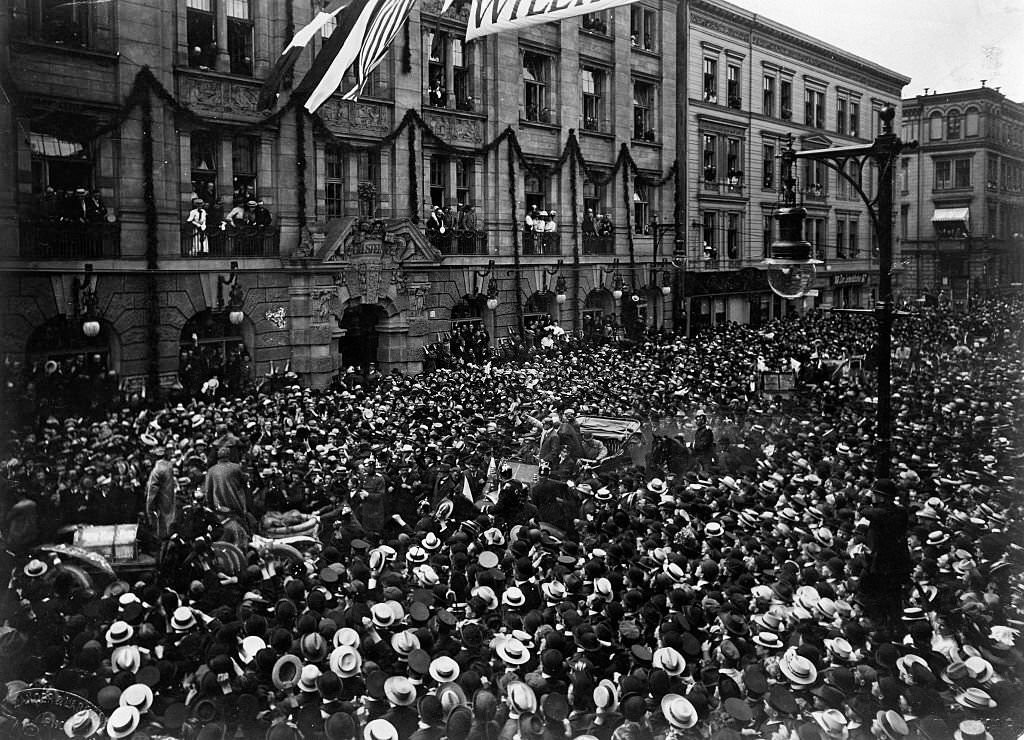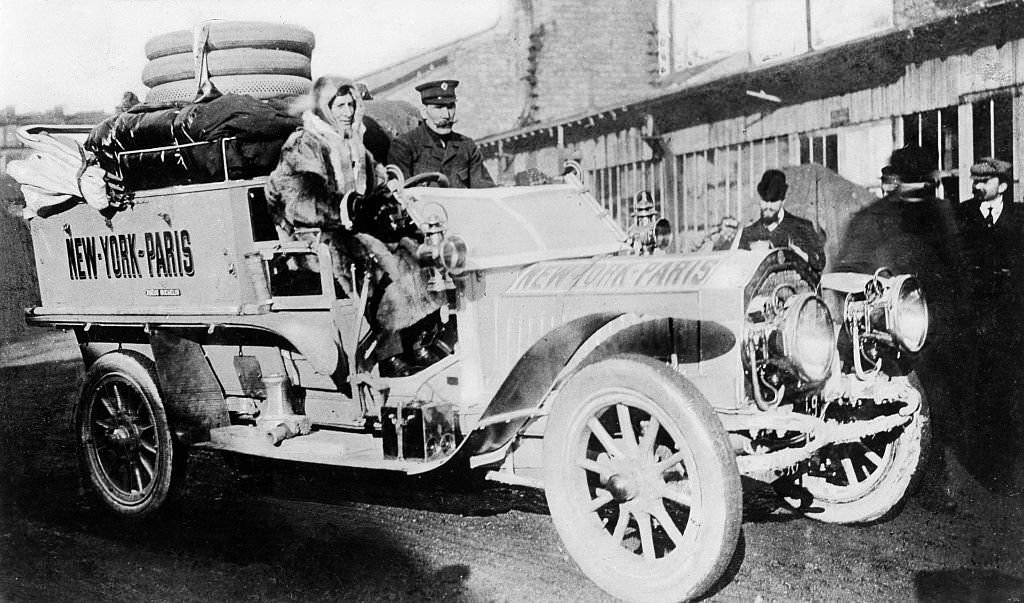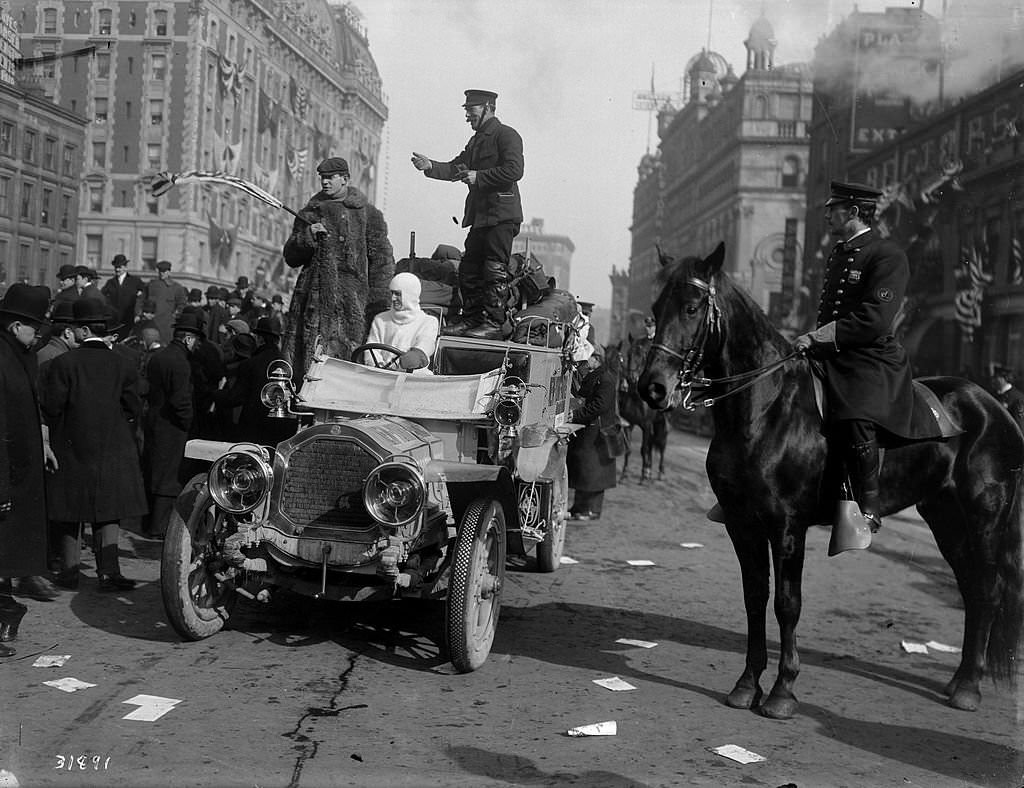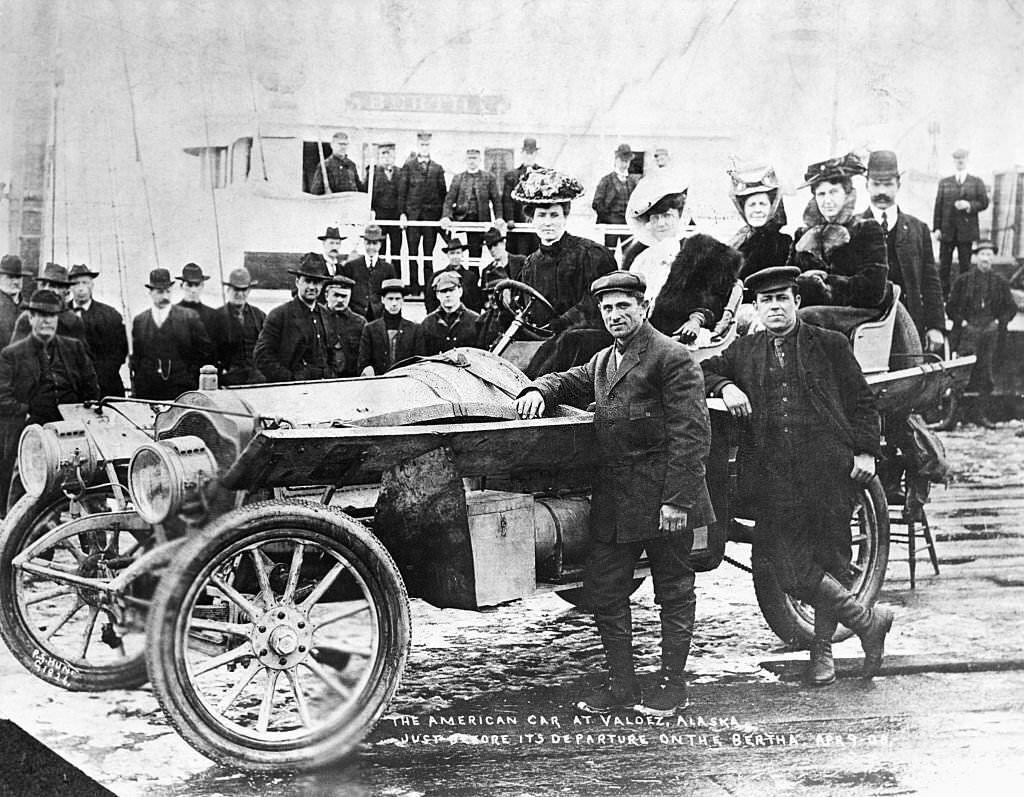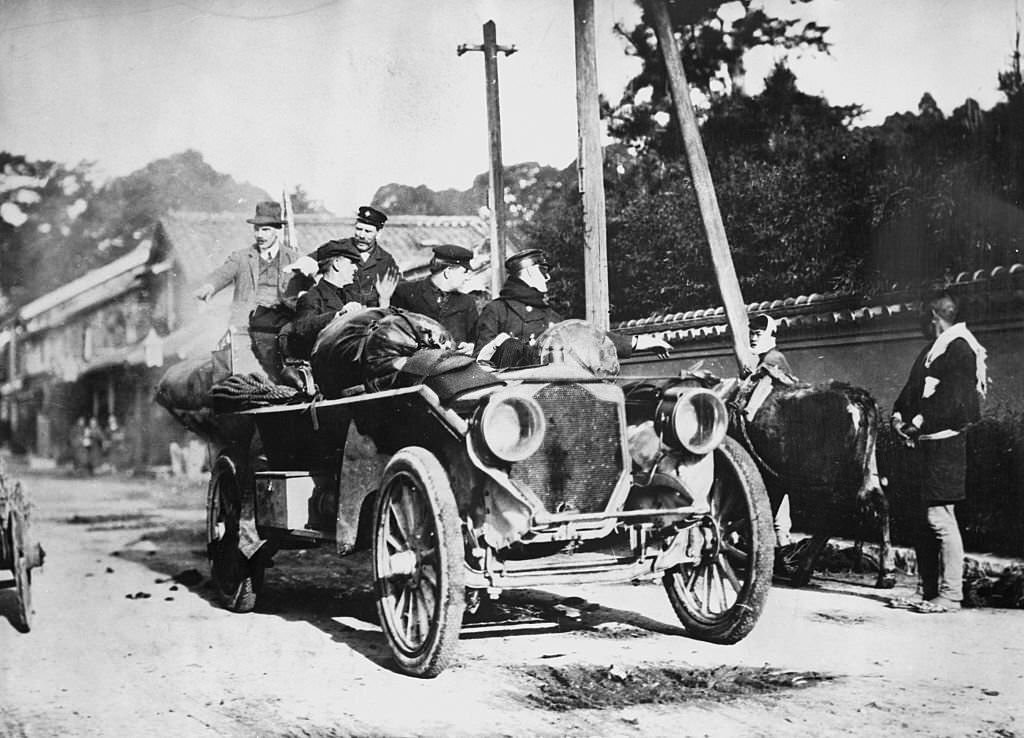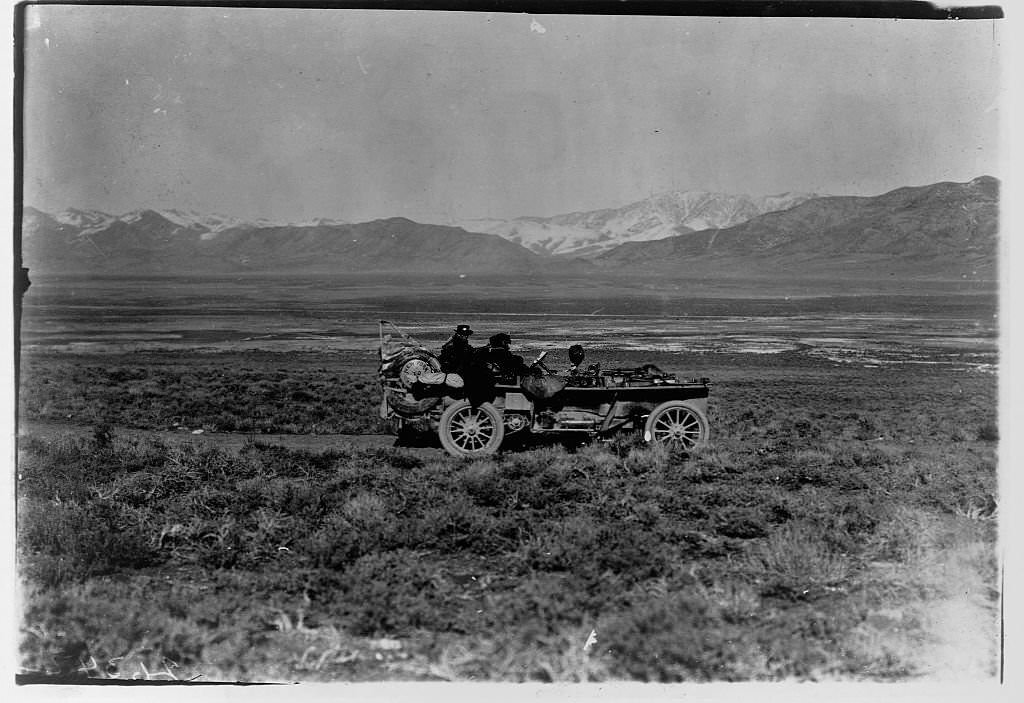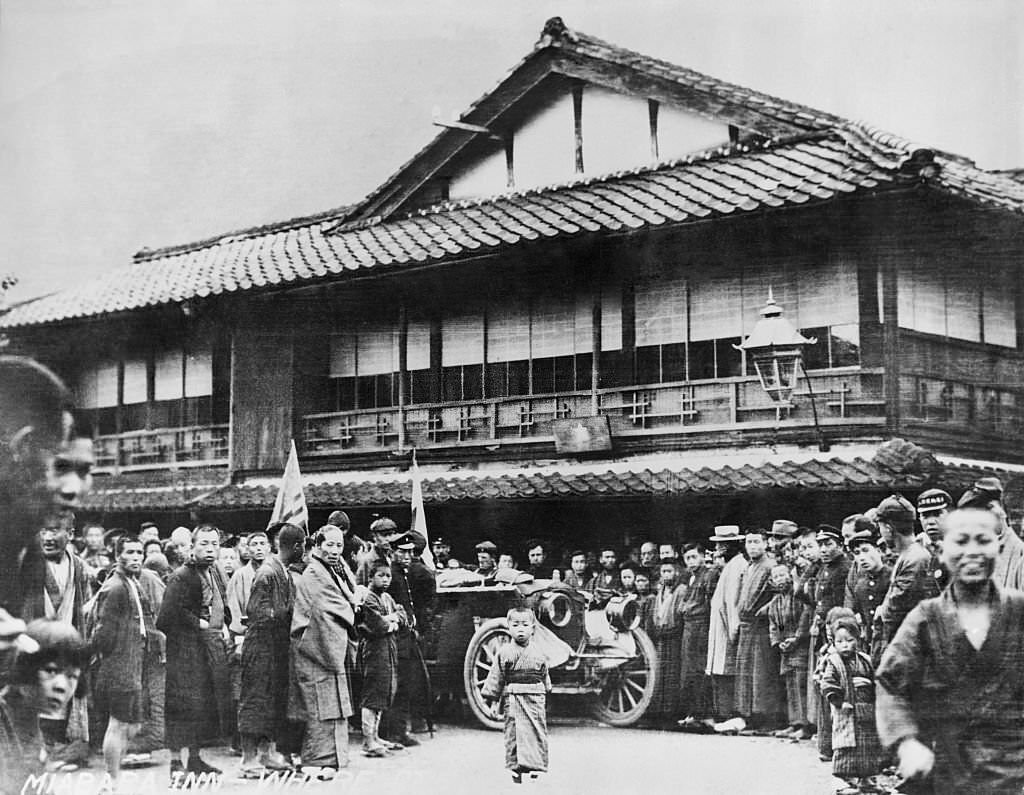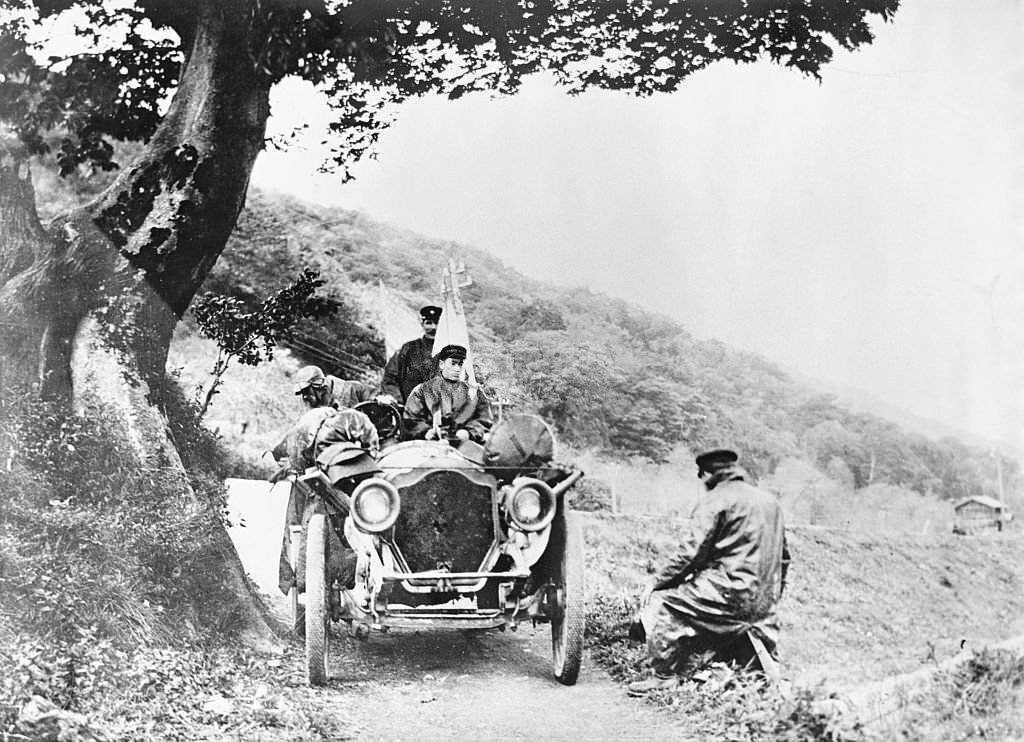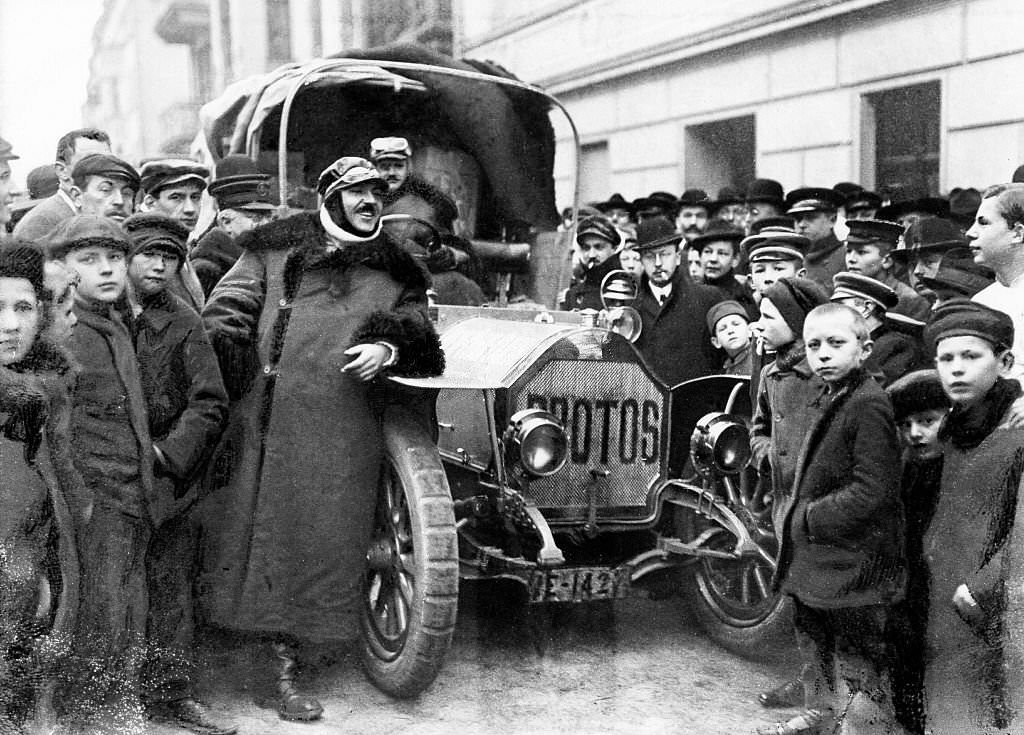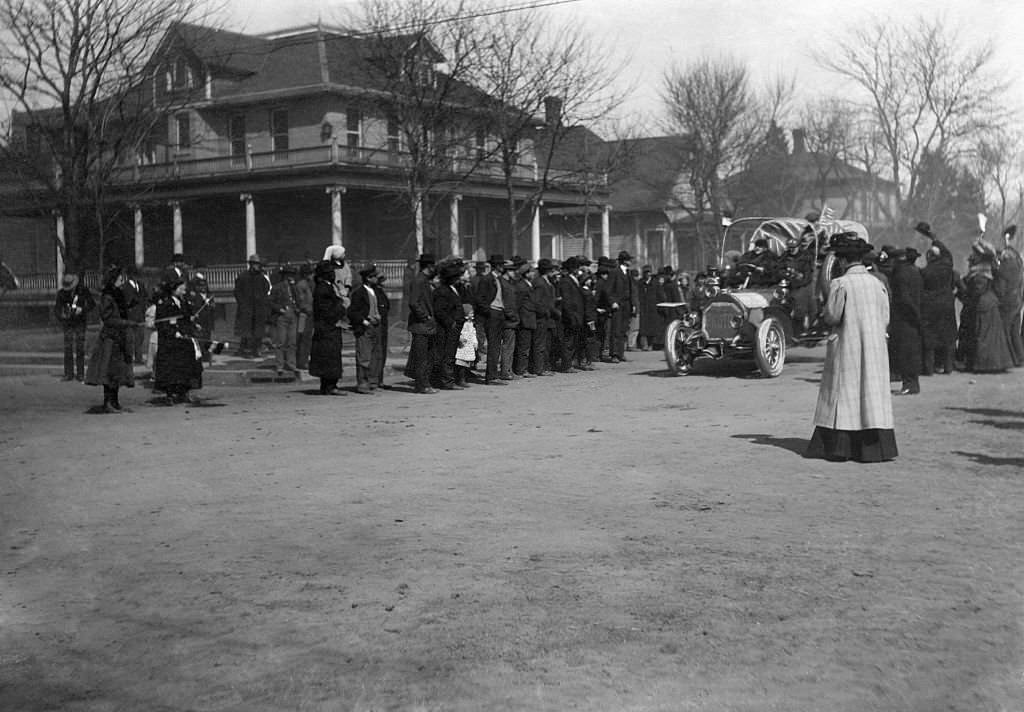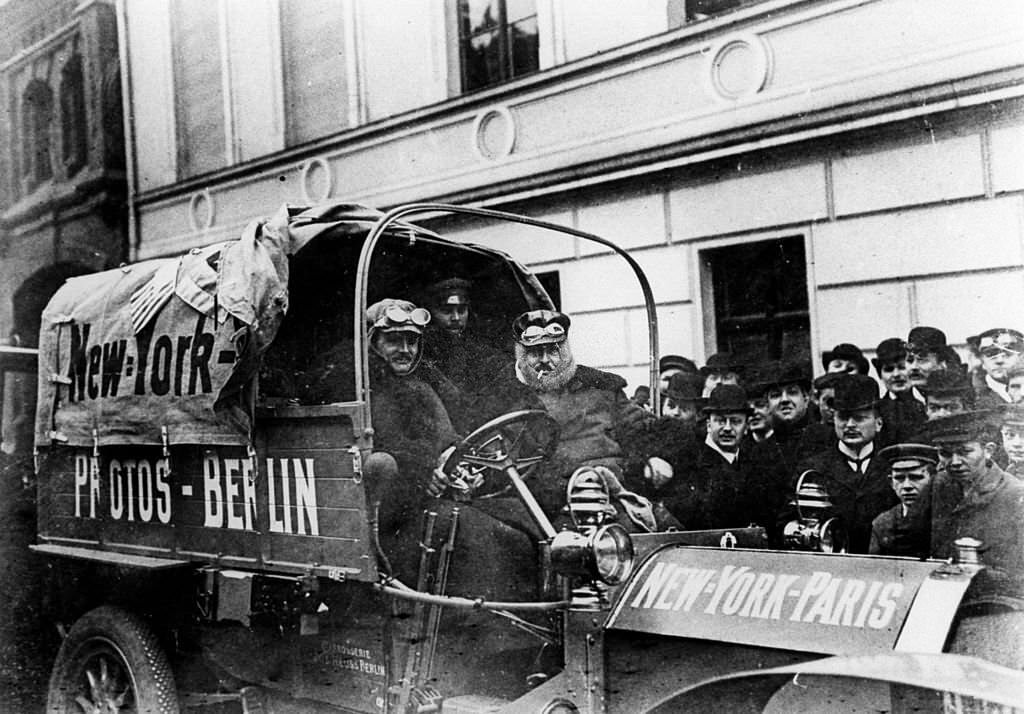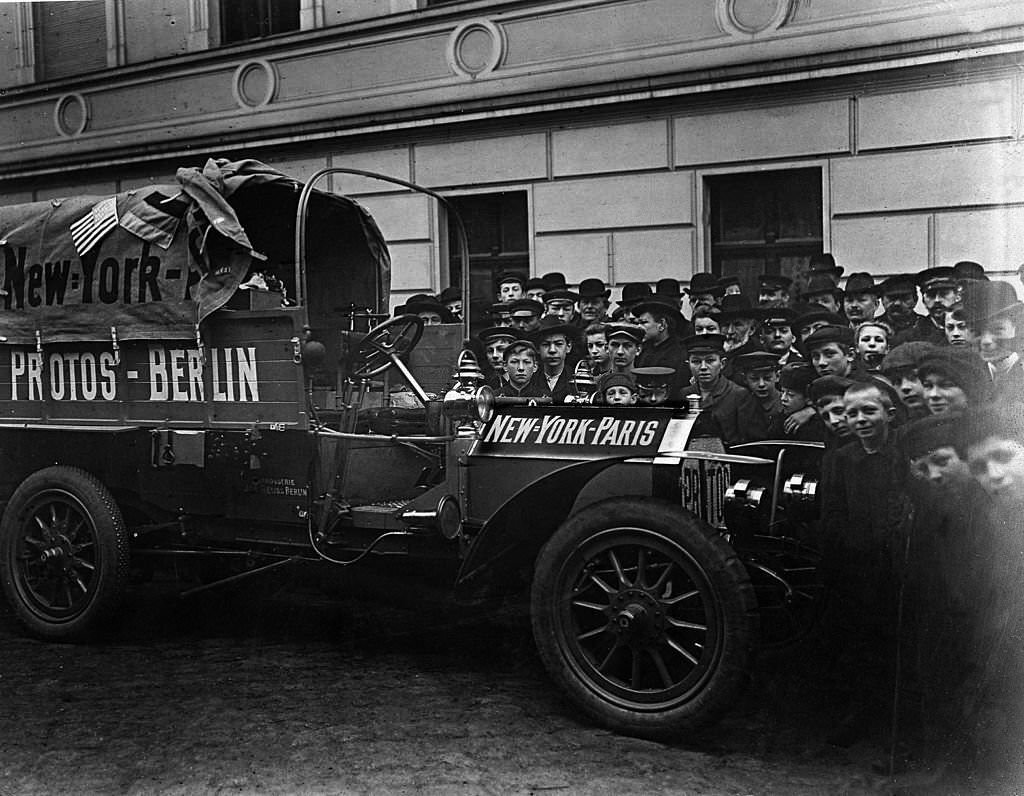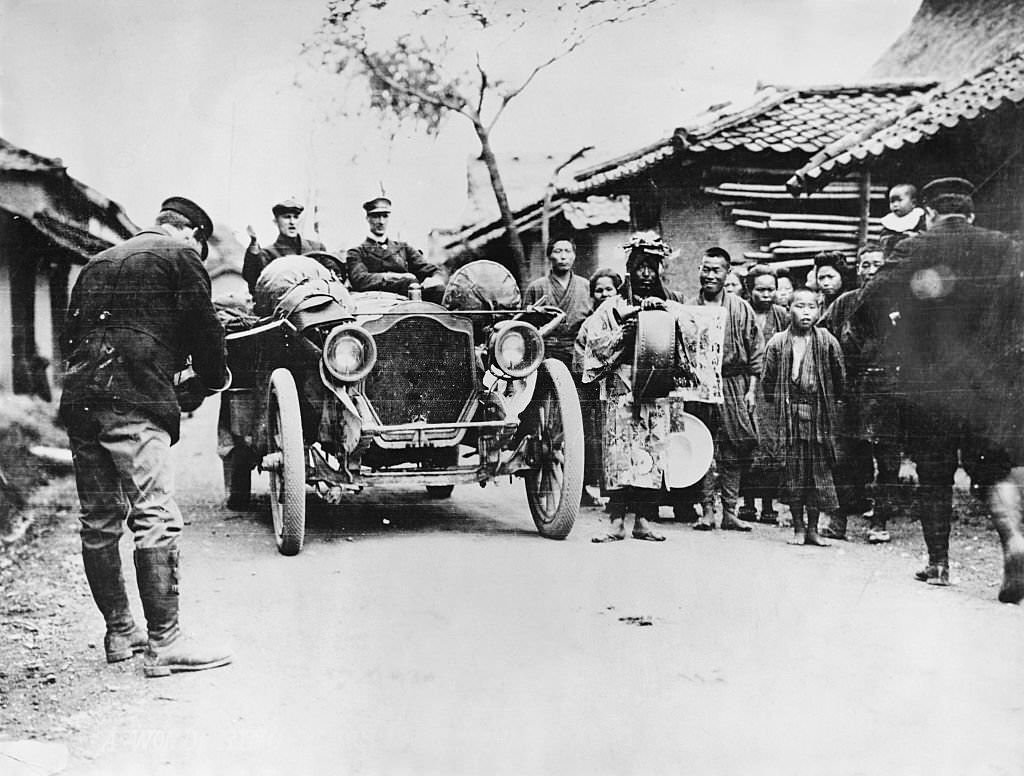Automobiles in the early 20th century were infant technologies with no infrastructure such as road maps, traffic signals, pavement, gas stations, parking lots, expressways, or motels. The vast majority of people hadn’t seen a car before. So what could be more exciting than the first automobile race ’round the world under conditions such as these?
In the summer of 1907, a race was announced “The Great Race: New York to Paris by Automobile.” The reward: a trophy weighing 1,400 pounds and proof that it could be done. The race began on February 12, 1908, in Times Square. A total of six cars representing four nations began the 169-day ordeal (making it the longest motorsport event to date). Germany, France, Italy, and the United States participated in the race. Germany sent a Protos, Italy sent a Zust, France sent three cars (De Dion-Bouton, Motobloc, and Sizaire-Naudin), and the United States sent a Thomas Flyer. The Thomas Flyer entered the race at the insistence of Theodore Roosevelt, who was concerned about European automobiles crossing the country unchallenged. A more established company, such as Buffalo’s Pierce-Arrow, declined to enter. At the last minute, the Thomas Automobile Company, also from Buffalo, pulled a production car from its factory and entered the race. Buffalo’s own George Schuster drove and was the mechanic.
The proposed route crossed the United States through areas with few roads, followed by a boat trip across Alaska (hopefully frozen Bering Strait). The second crossing across Siberia to Moscow and the final leg to Paris. This was the first-ever winter crossing of the United States by car, which took 41 days, 8 hours, and 15 minutes. After being transported to Seattle, the vehicle was shipped to Valdez, Alaska. As the Americans turned north, they had a line of followers that stretched from California to Iowa. Zust was in Omaha, De Dion in Cedar Rapids, Iowa, Moto*Bloc in Maple Park, Illinois, and Protosa were in Geneva, Illinois. Due to mechanical problems, another French car was forced to withdraw. Thomas’ crew returned to Seattle after encountering impossible conditions in Alaska. A steamer rerouted the race across the Pacific to Japan, from where the Americans crossed the Sea of Japan. After that, it was on to Vladivostok, Siberia, by ship to begin crossing Asia and Europe. The German Protos, the Italian Züst, and the American Flyer were the only competitors to get past Vladivostok. During the spring thaw, the wet plains of Siberia and Manchuria made travel difficult.
It was a race that established the automobile’s reliability as a means of transportation far beyond the race itself. This led to the construction of better roads in many parts of the world.


